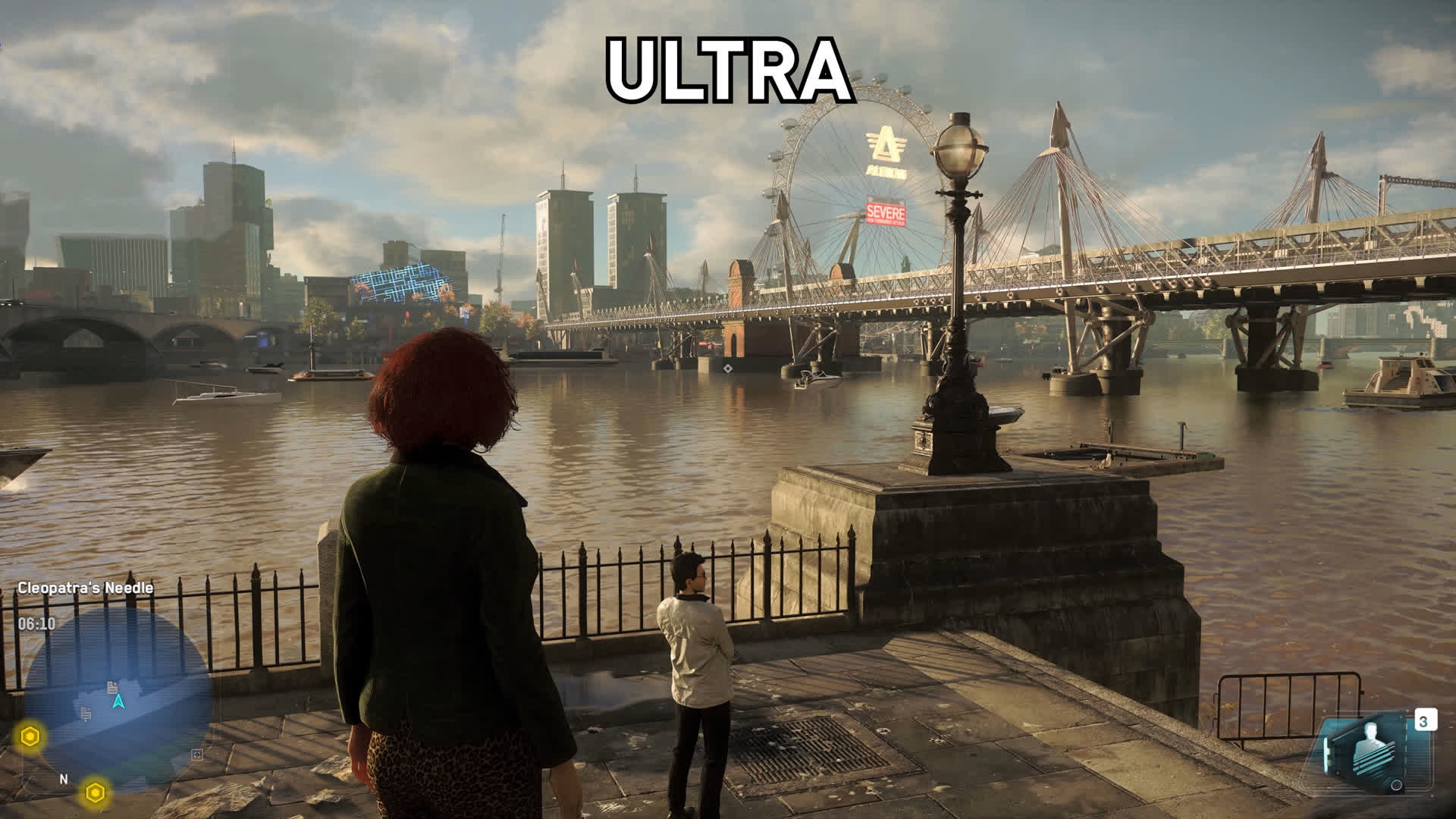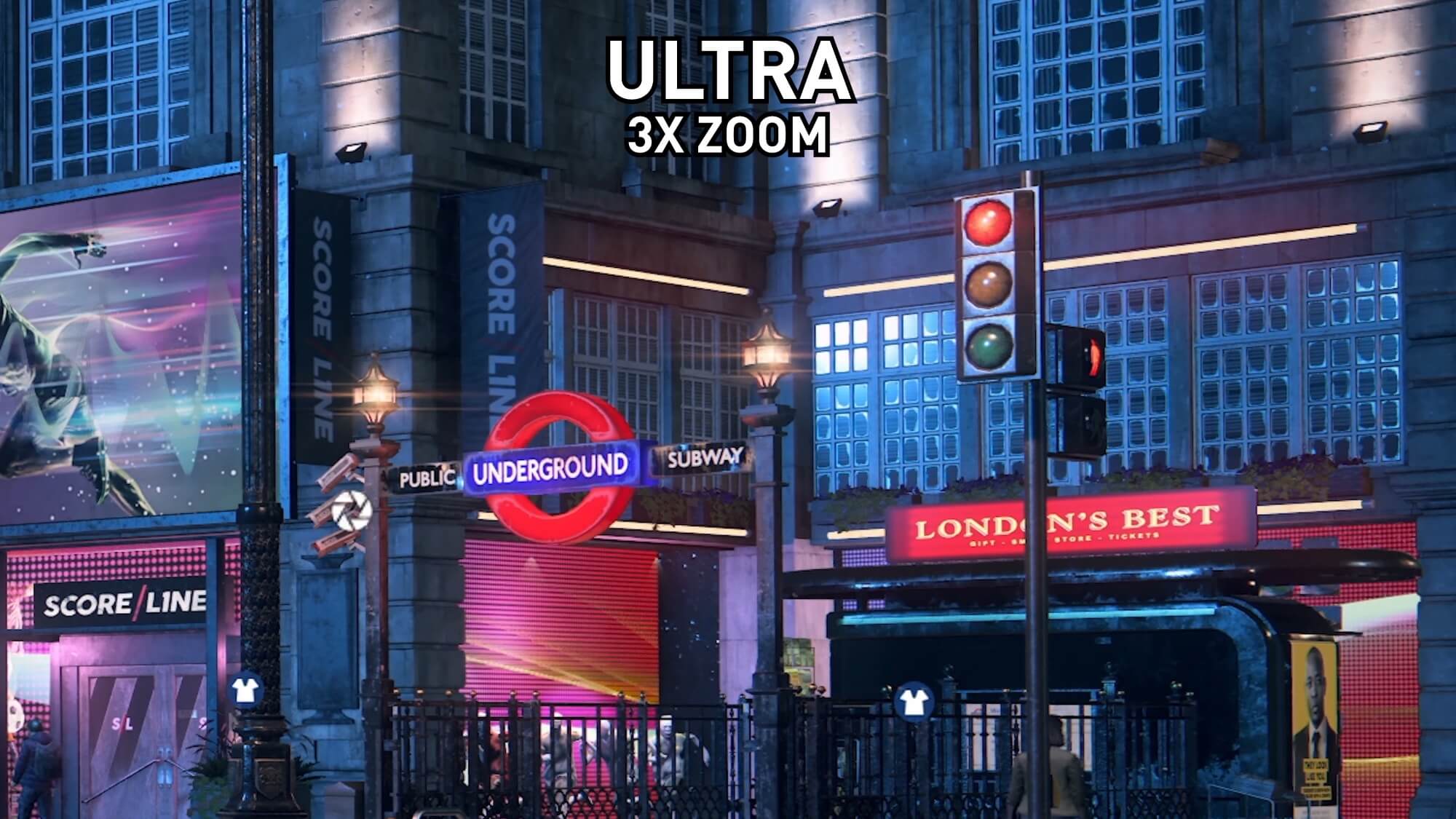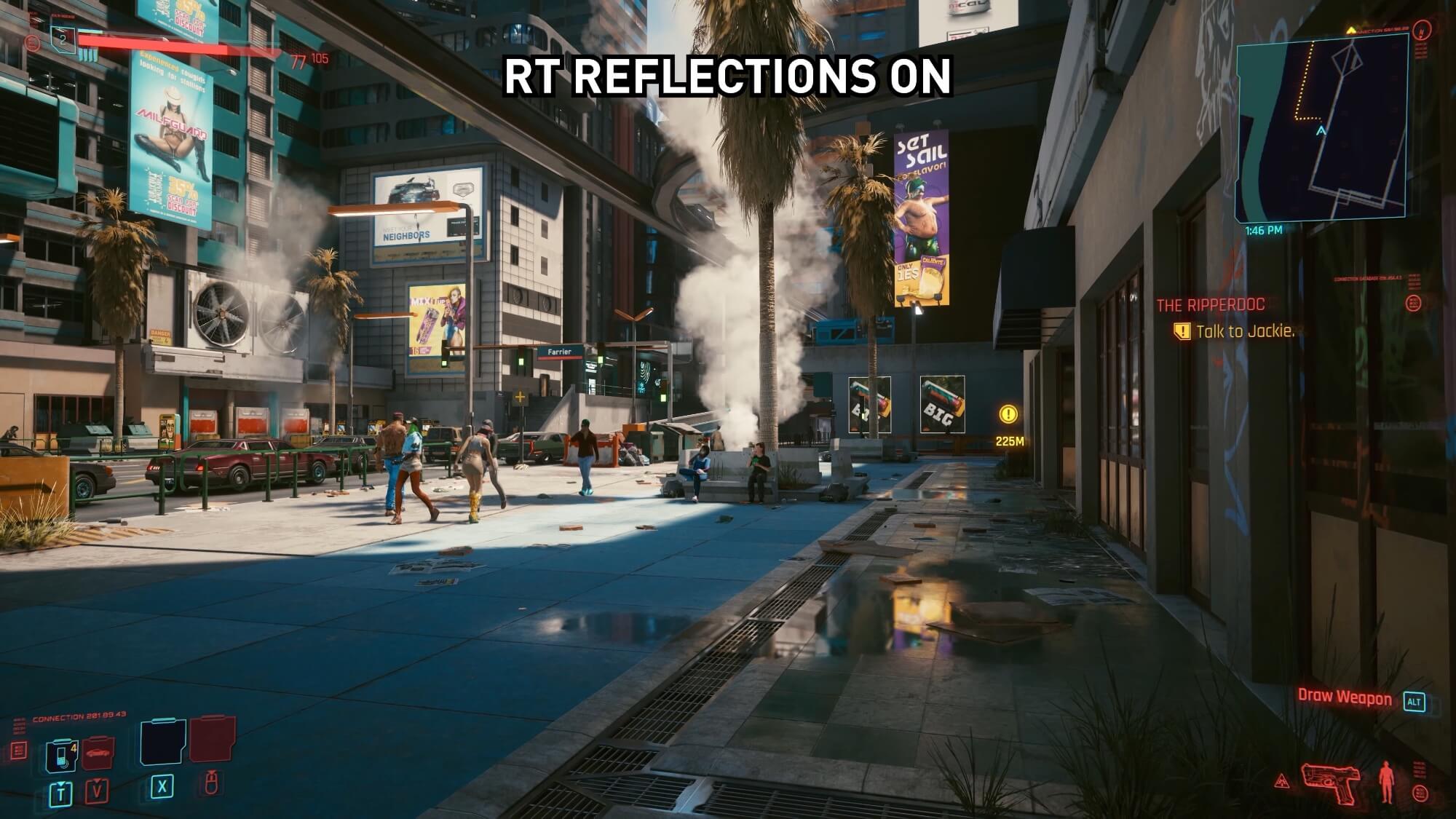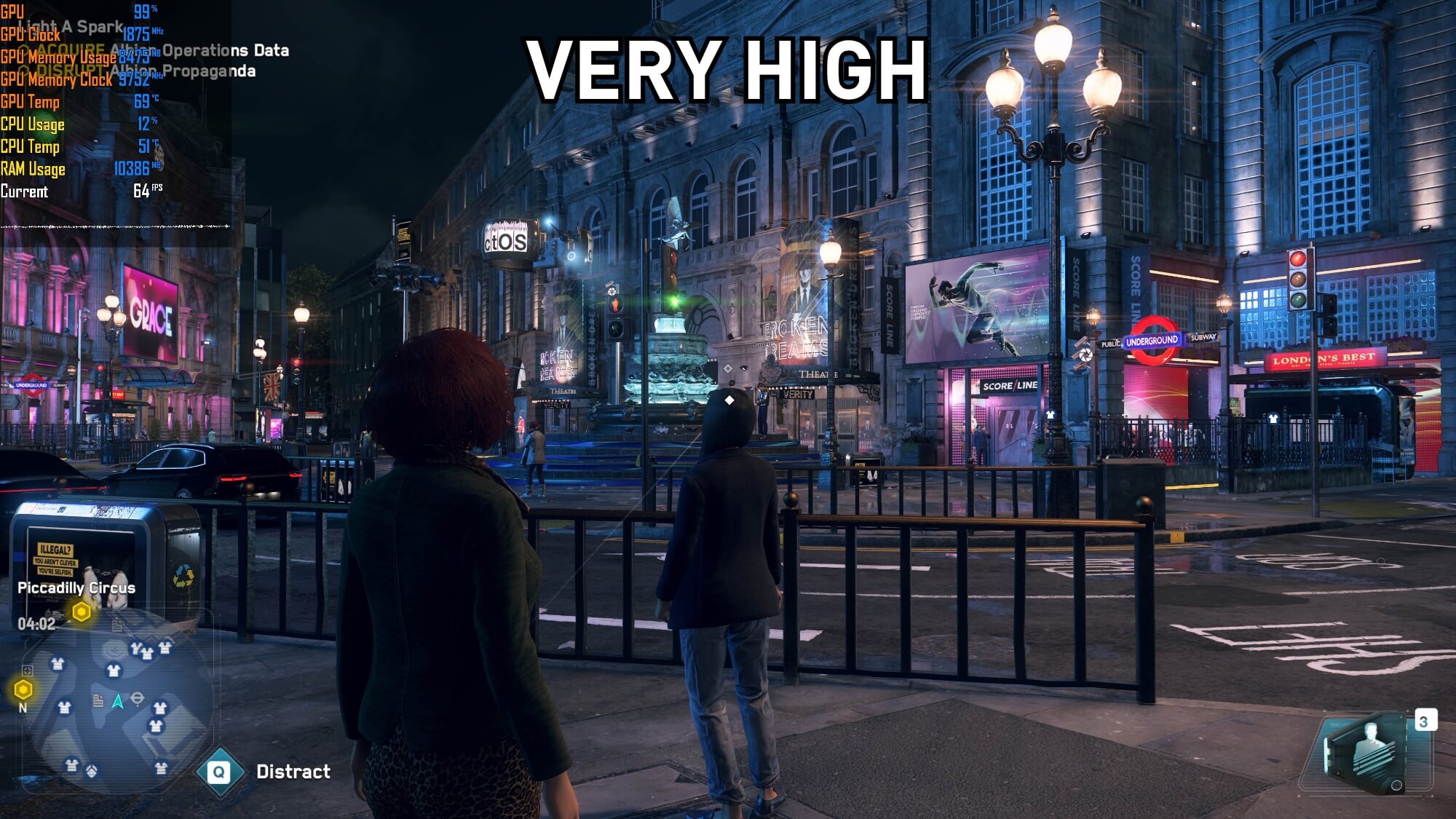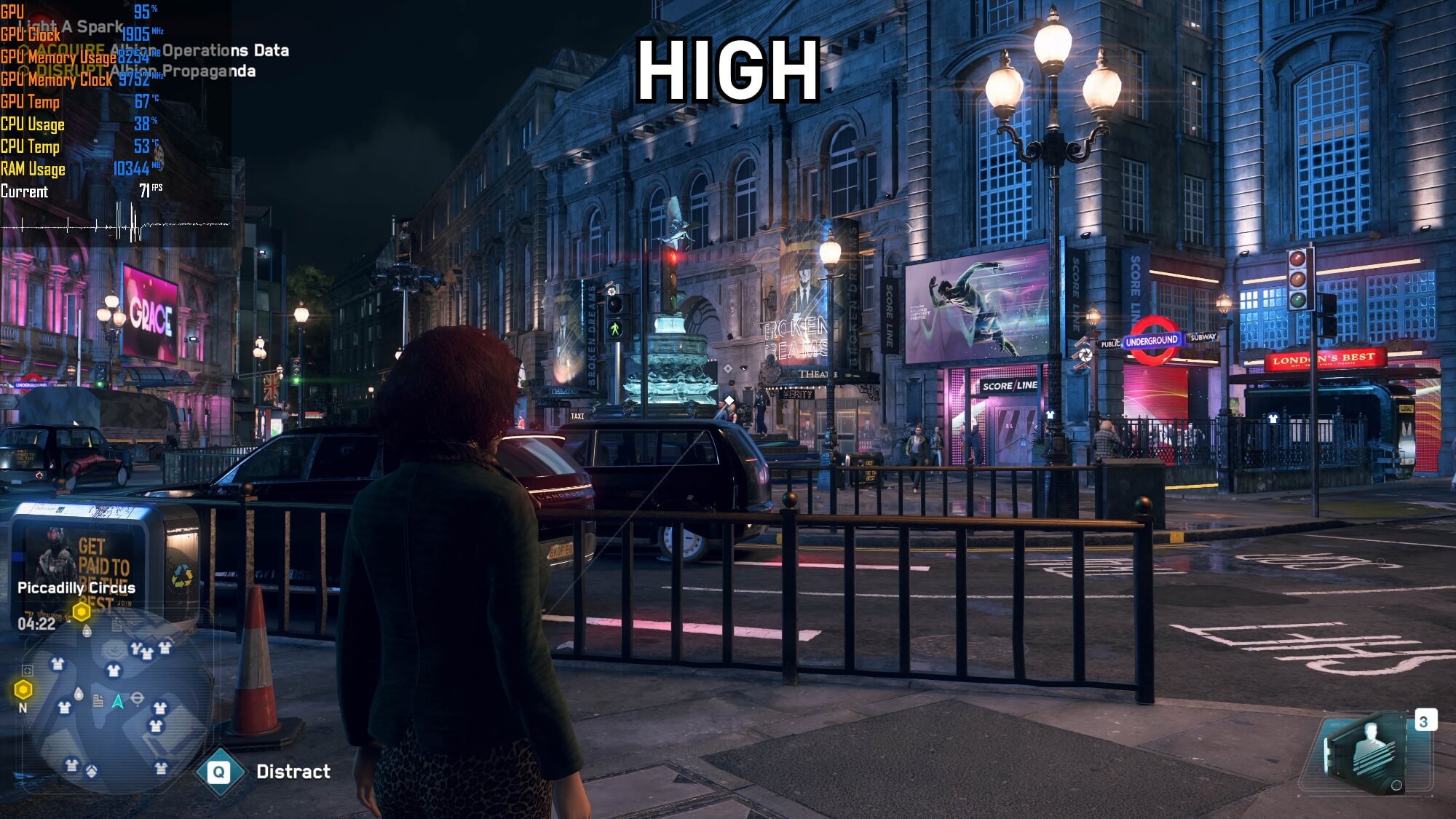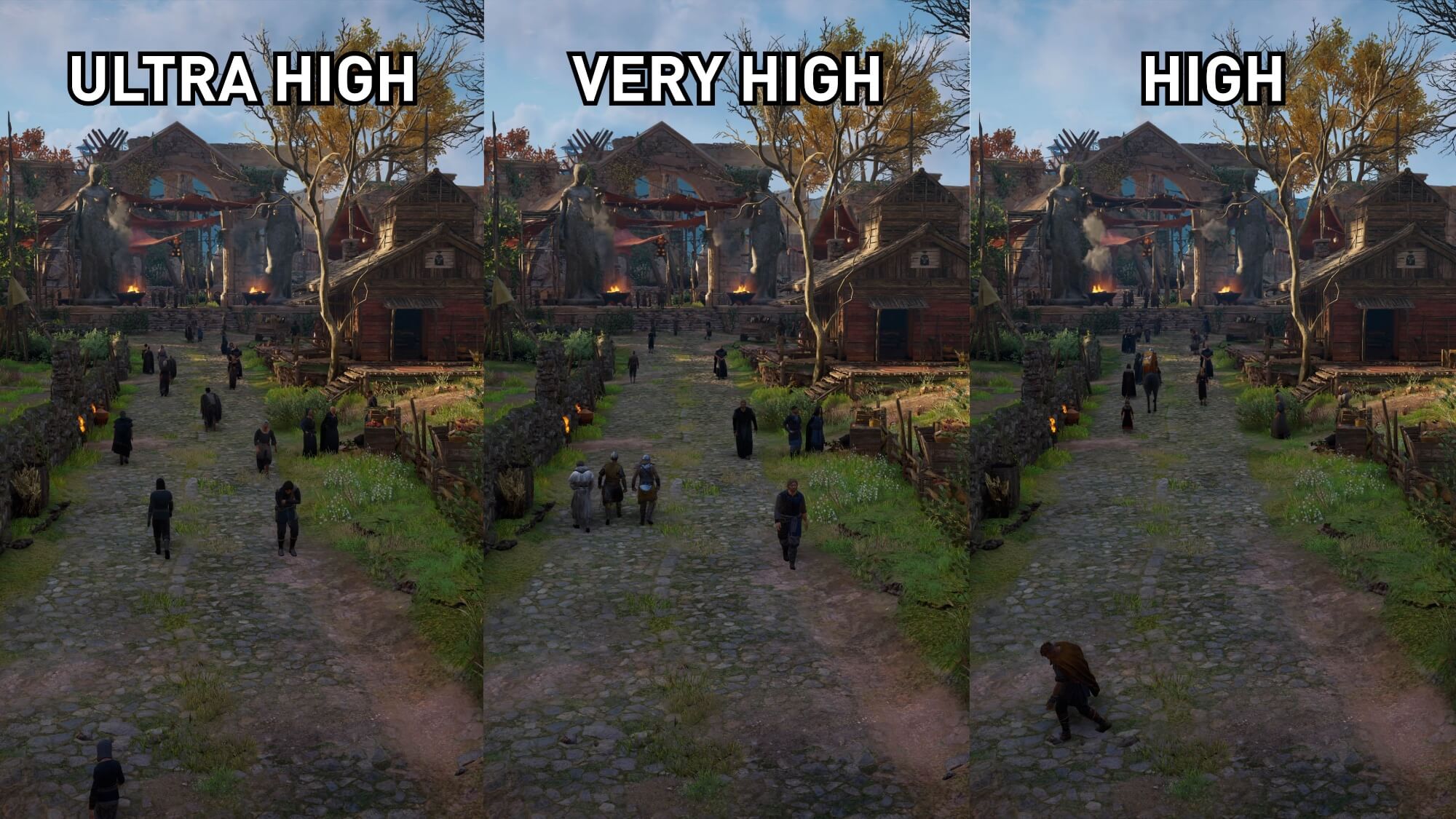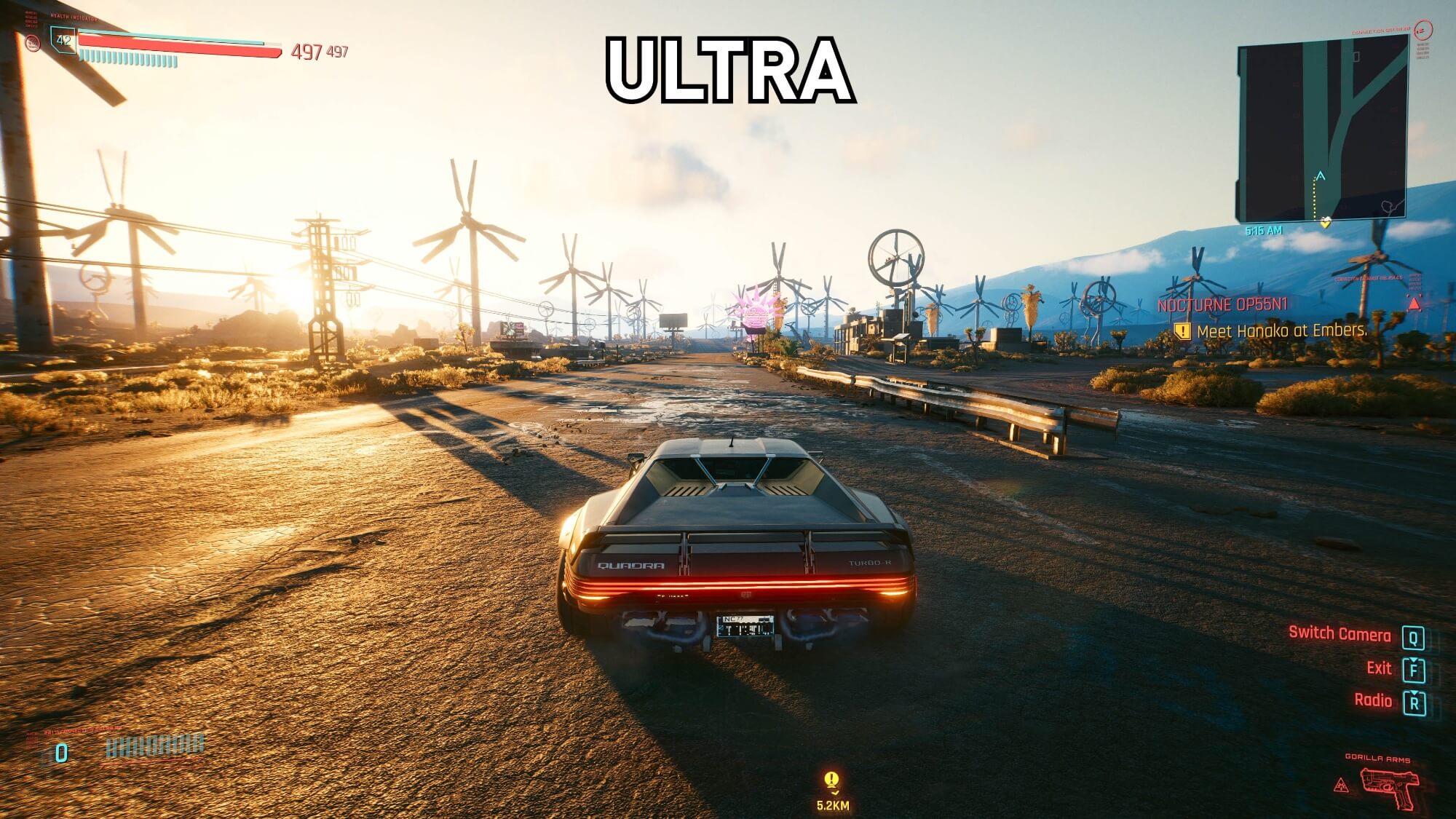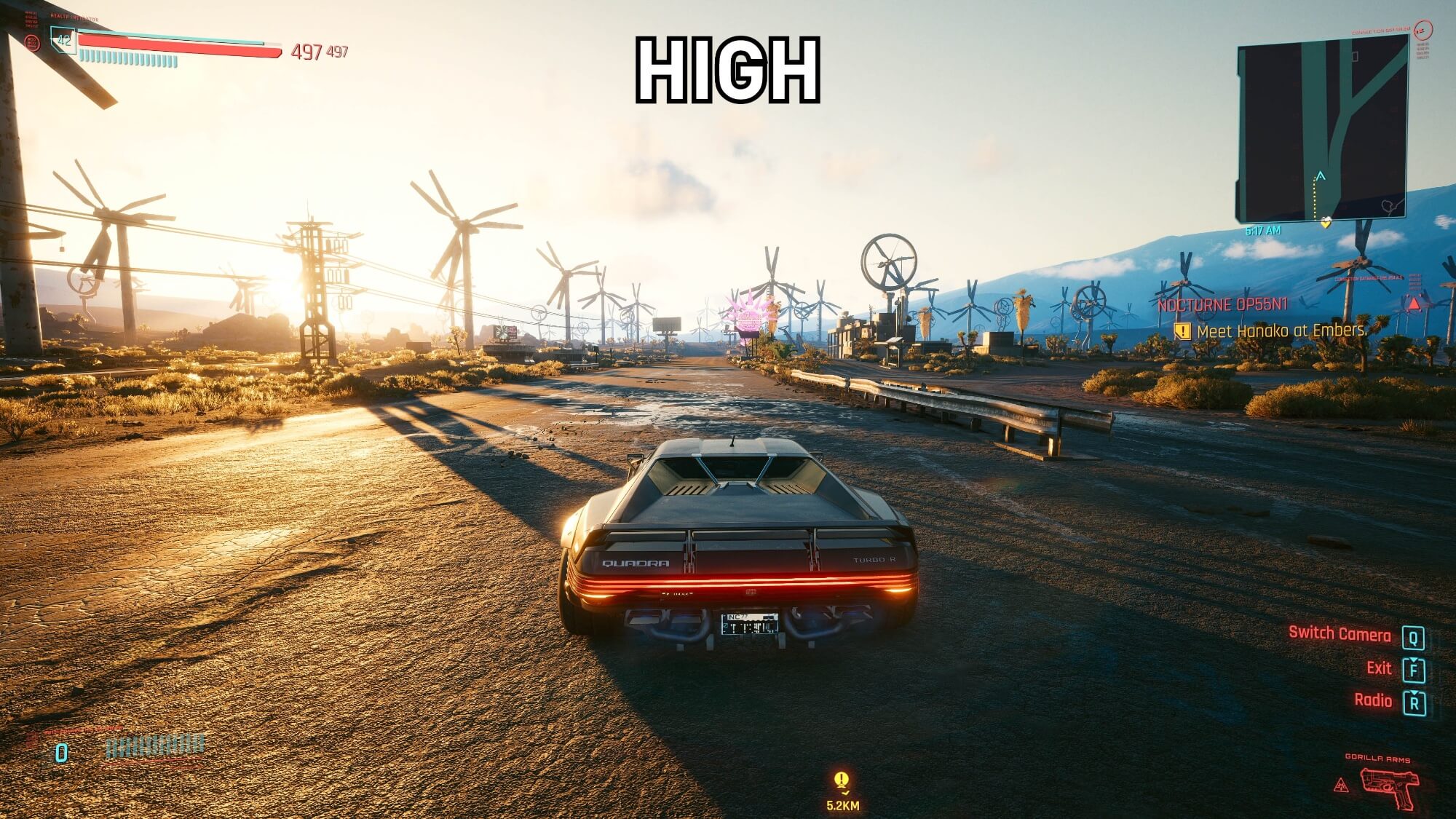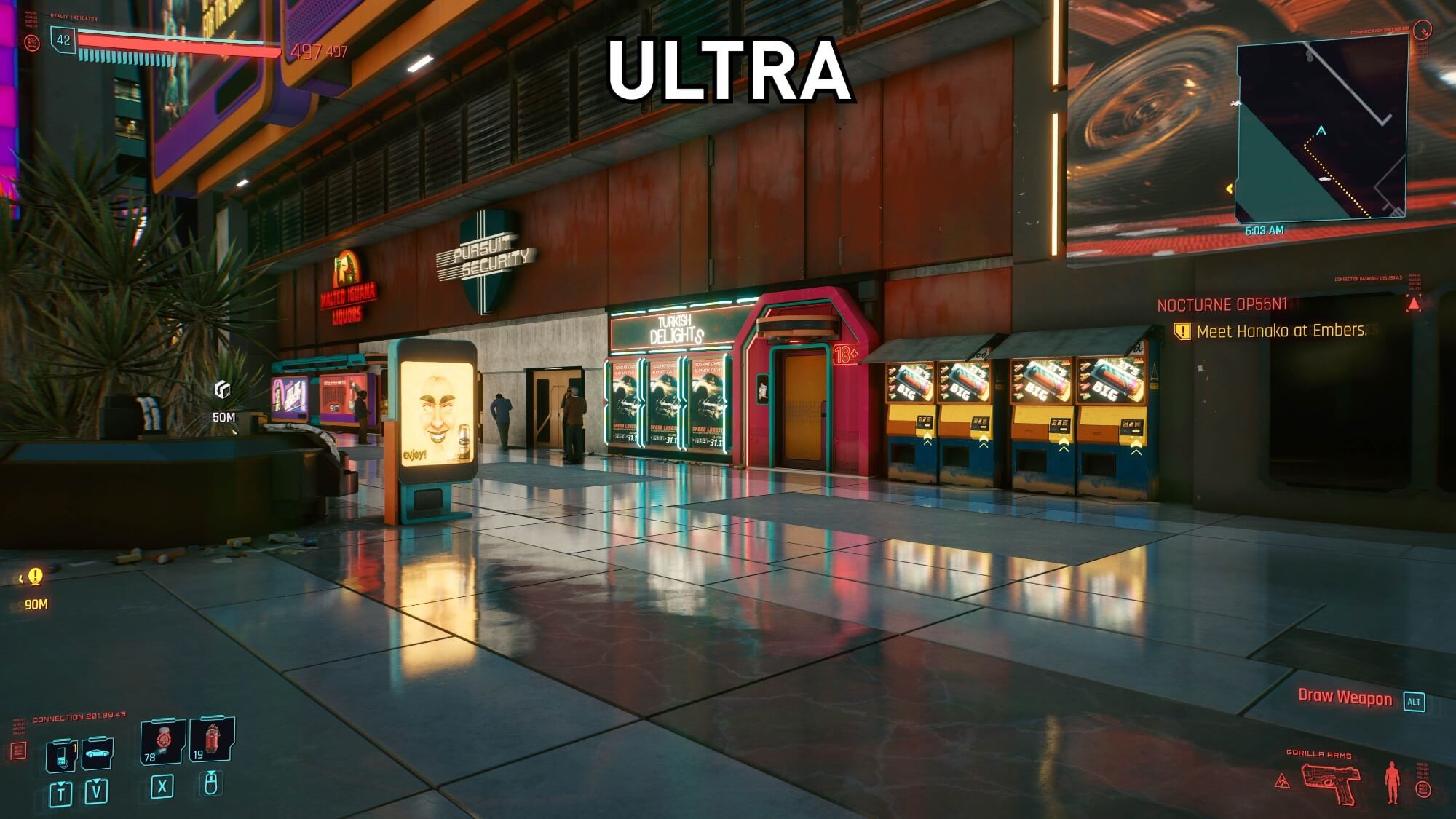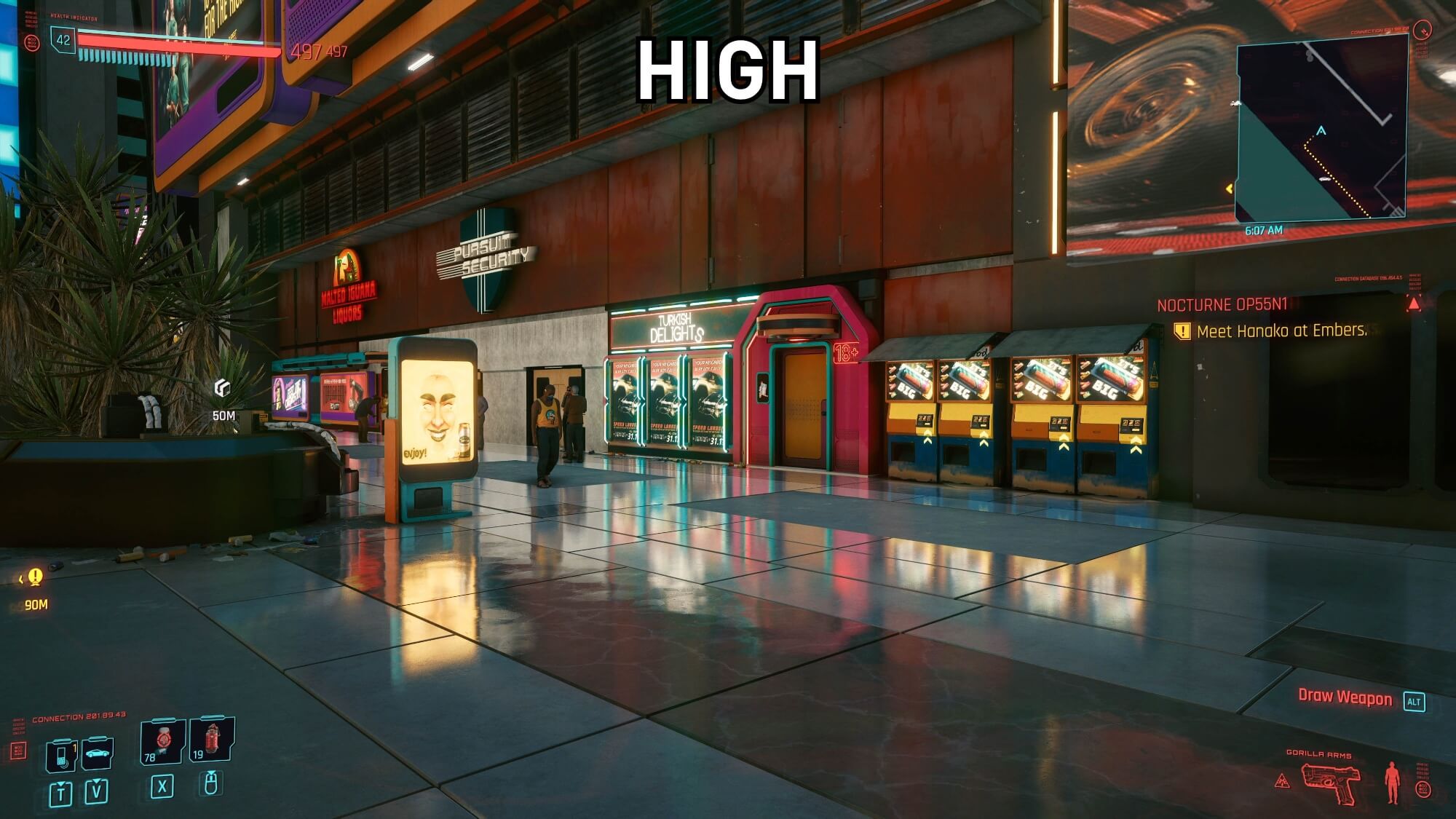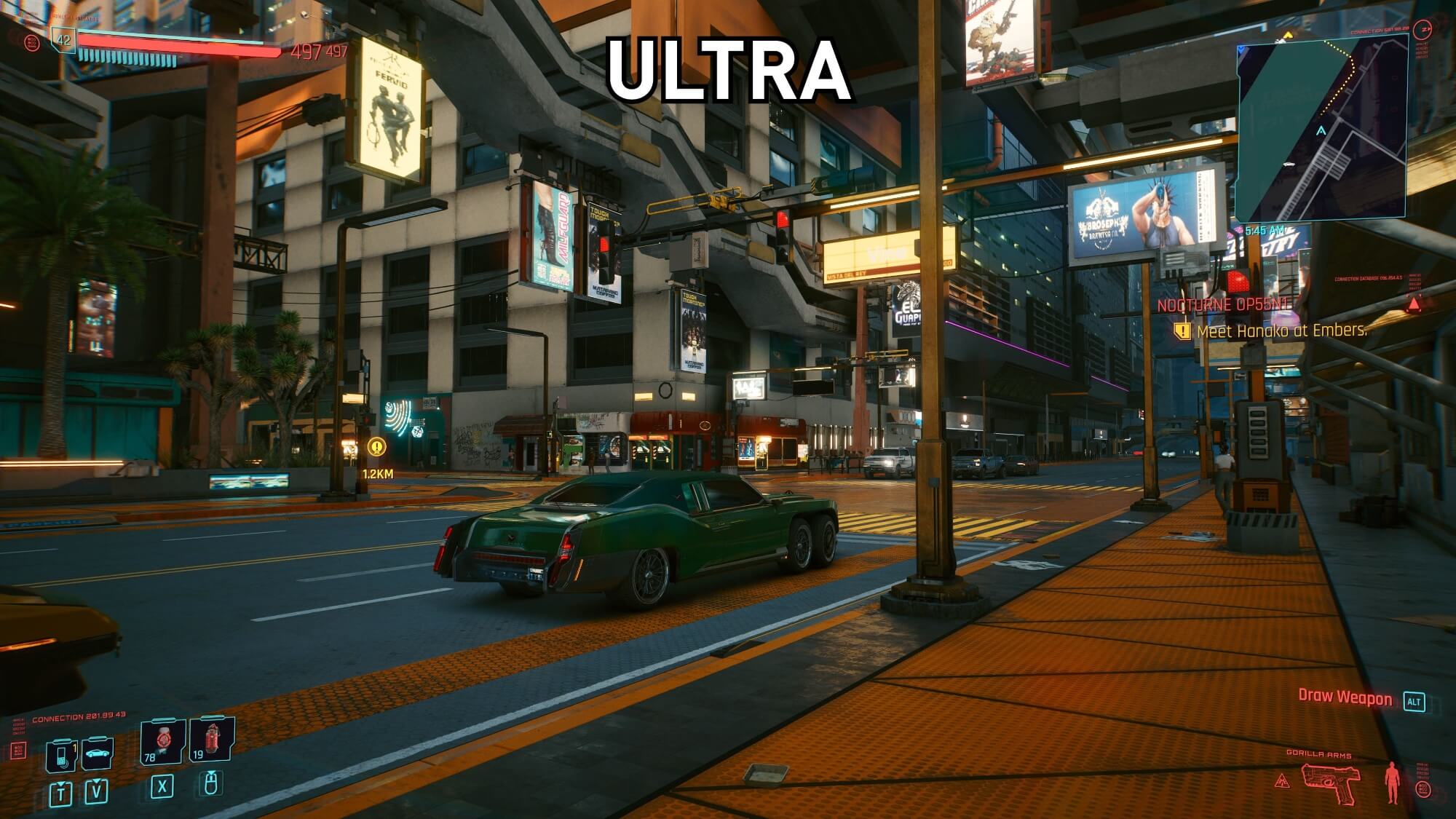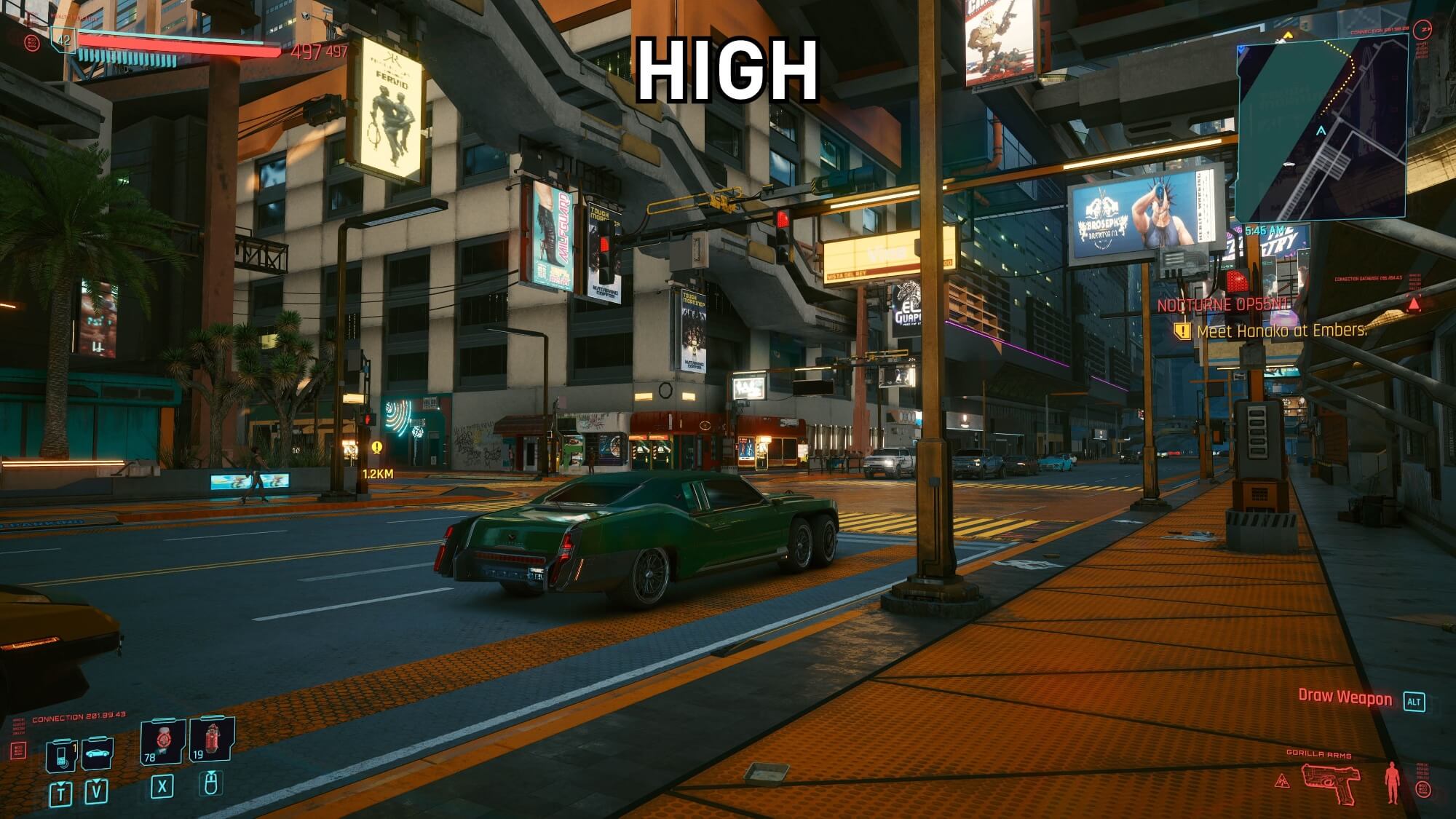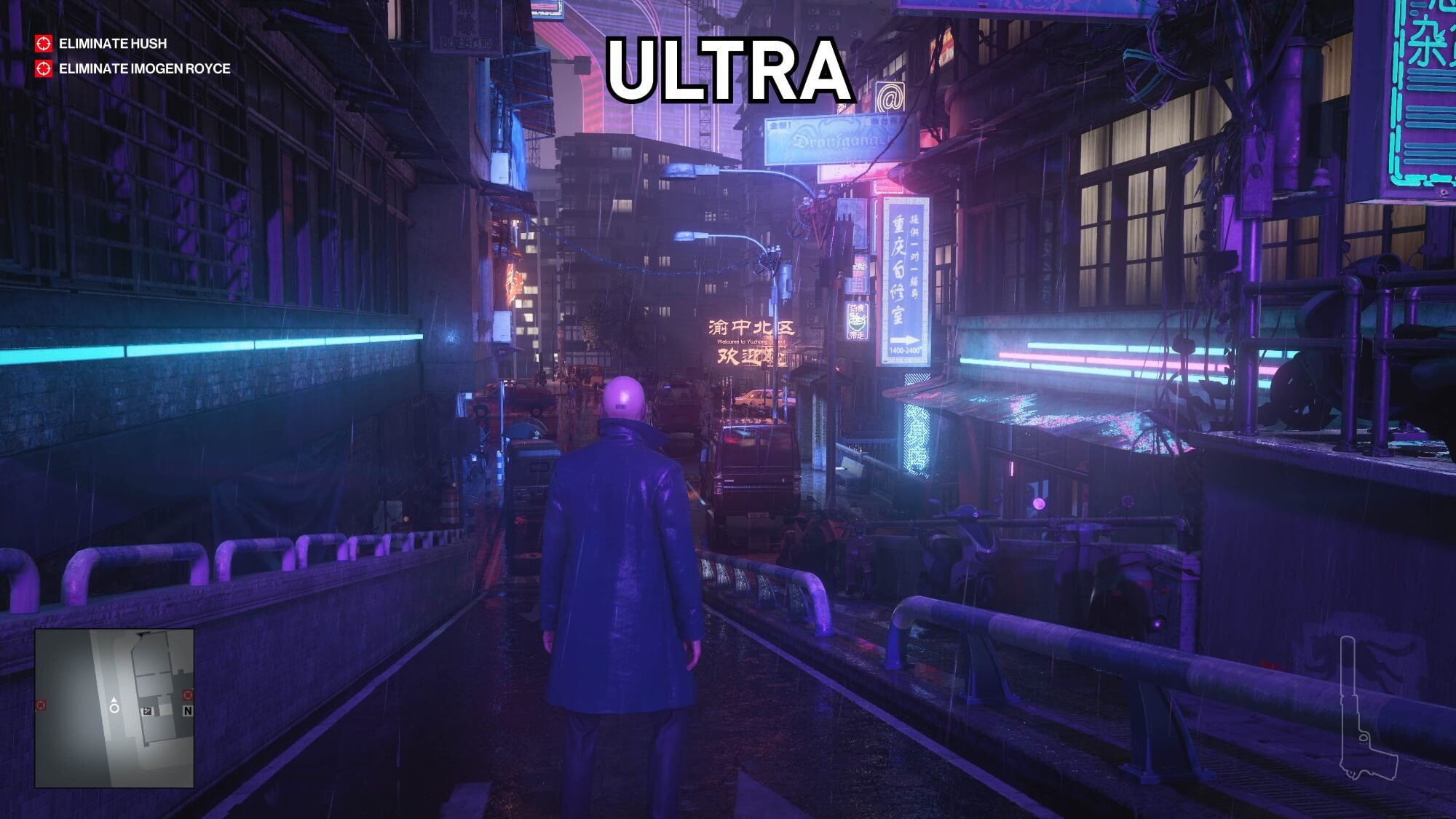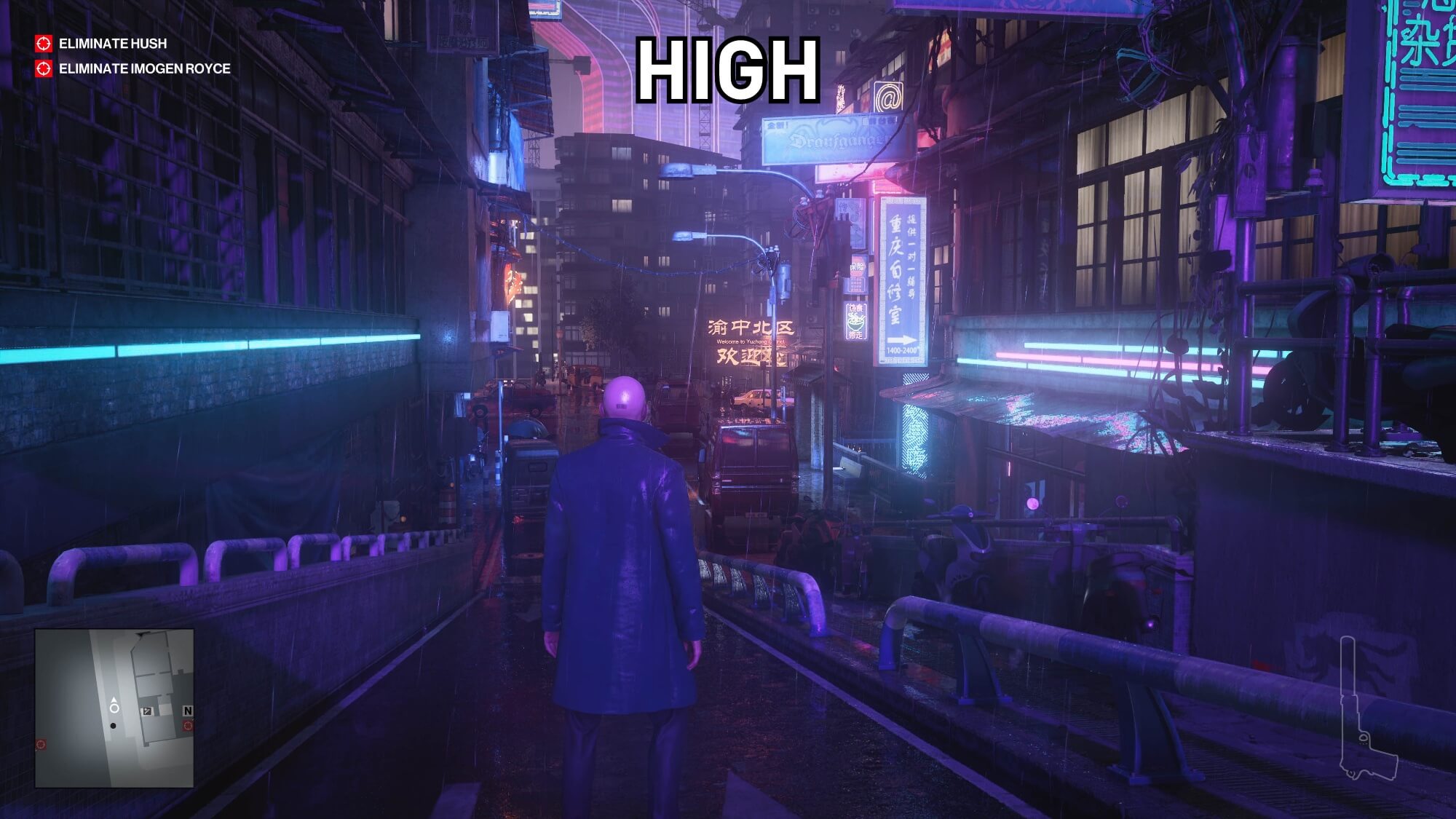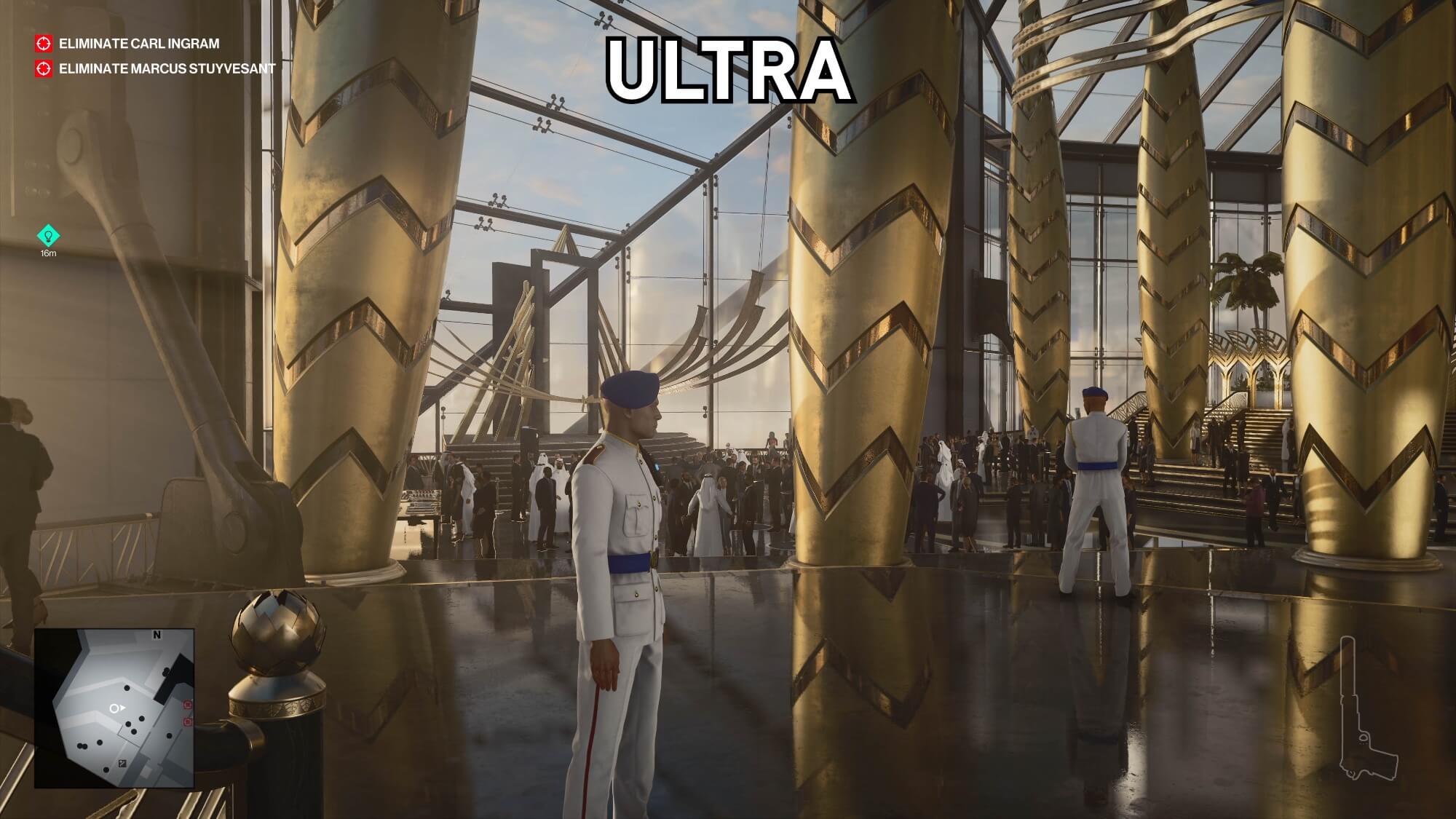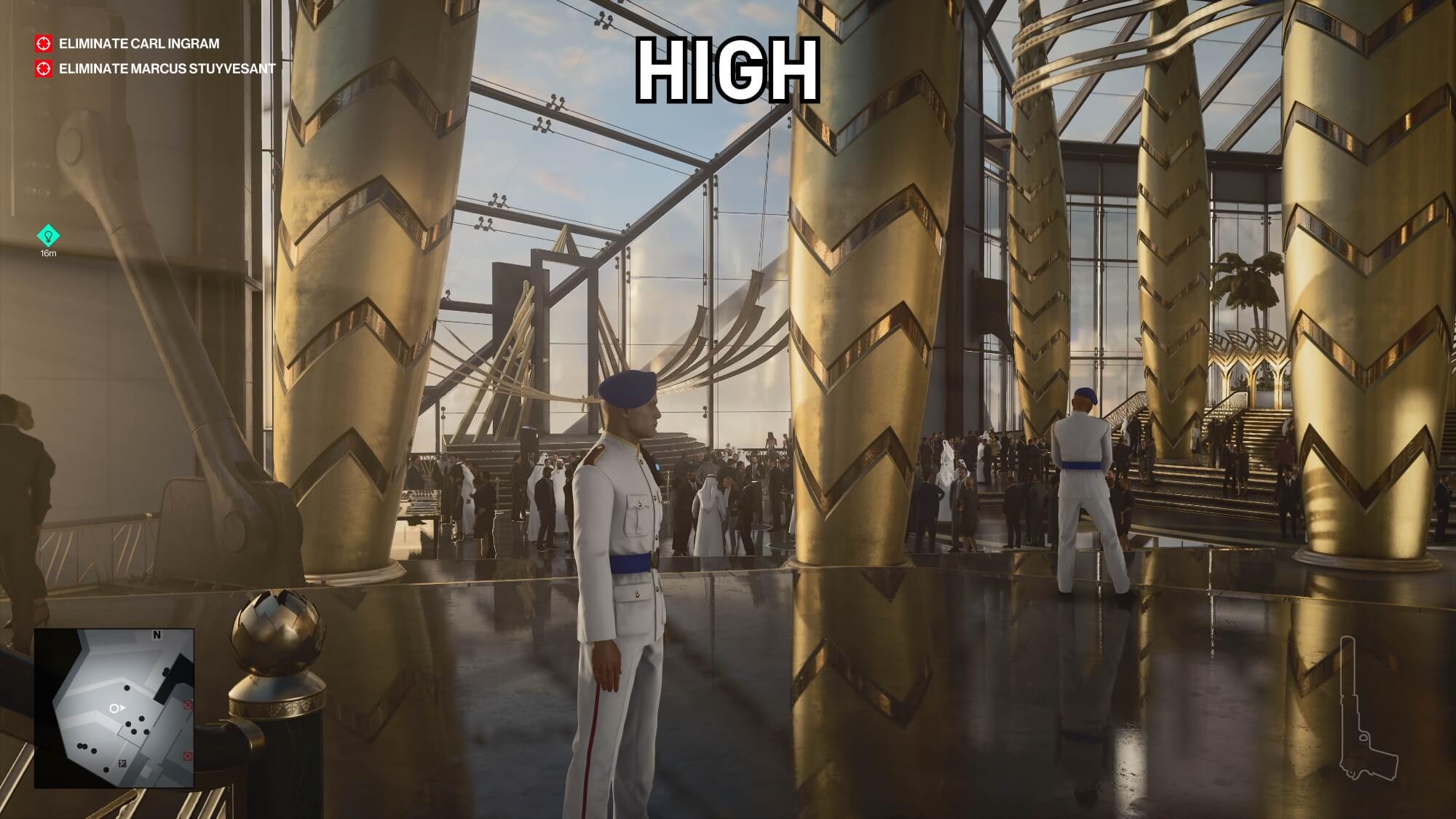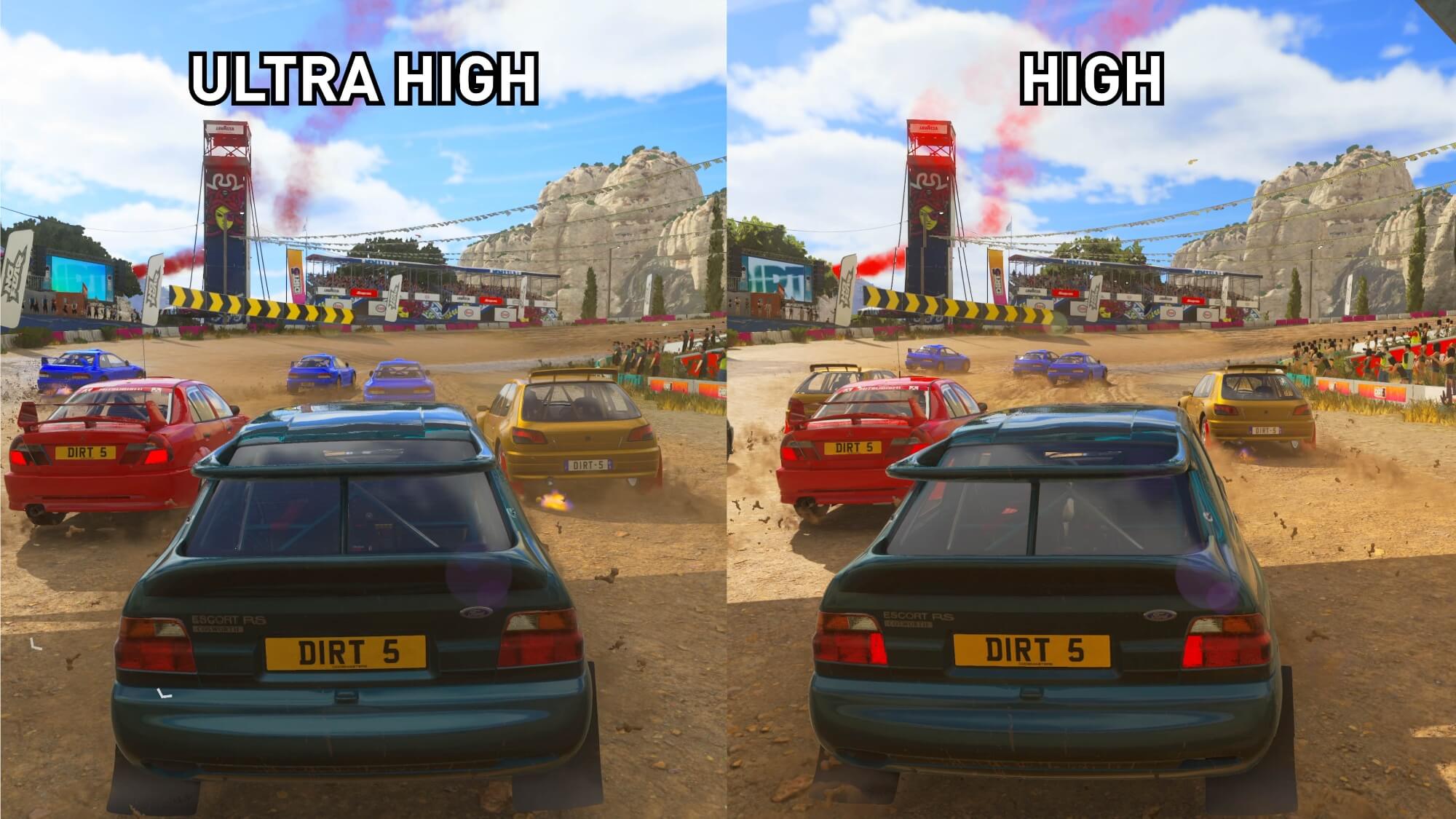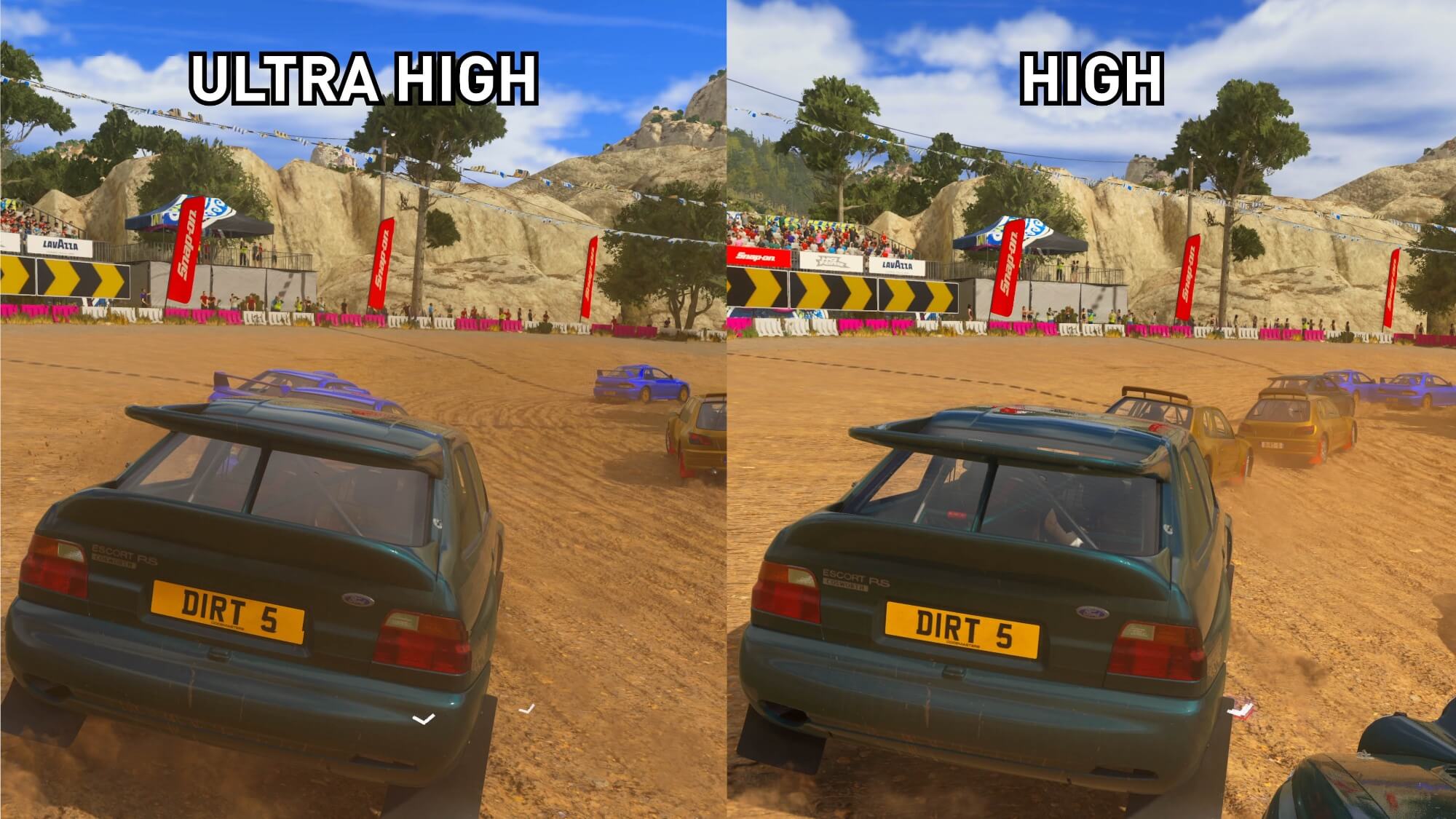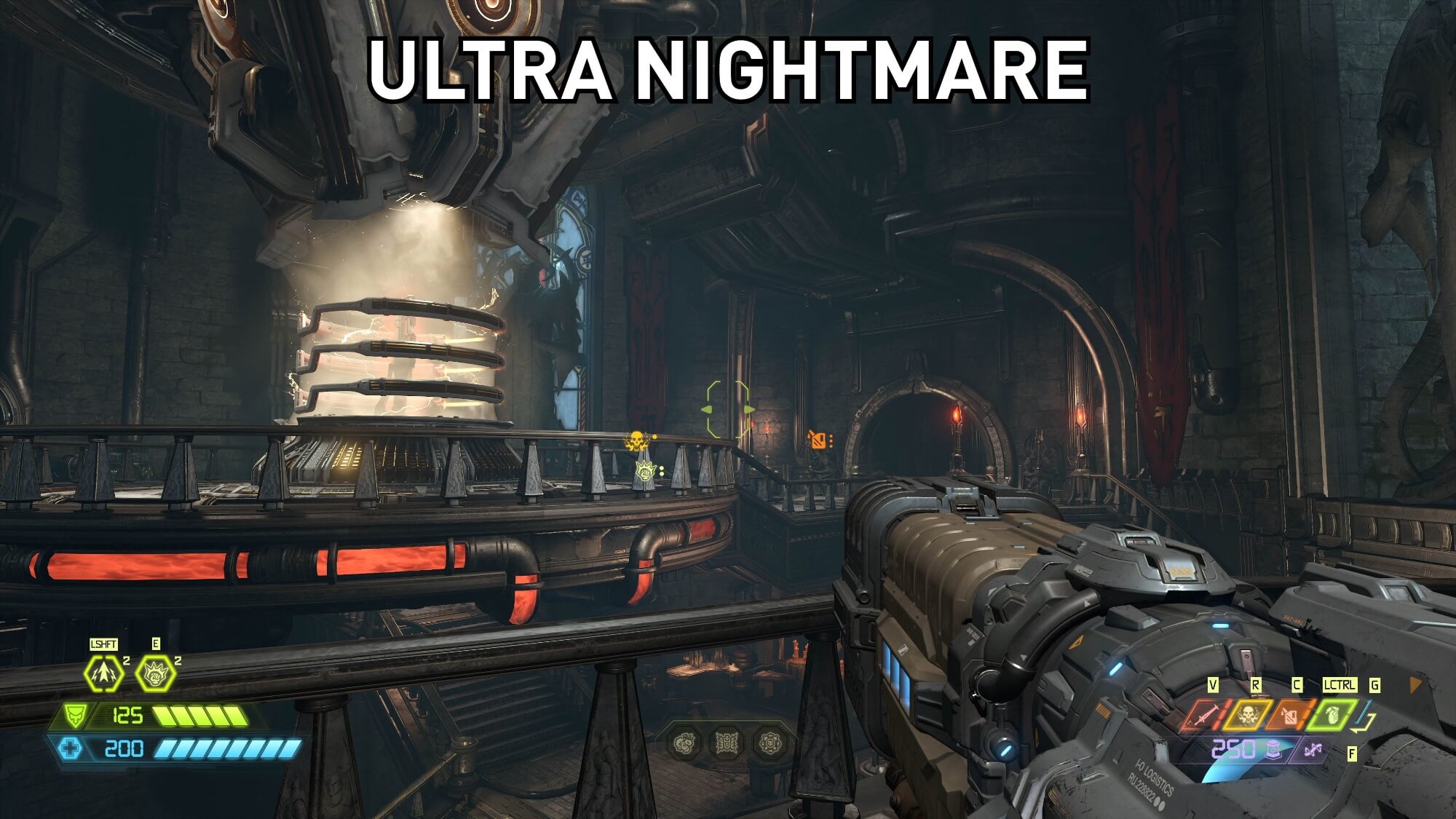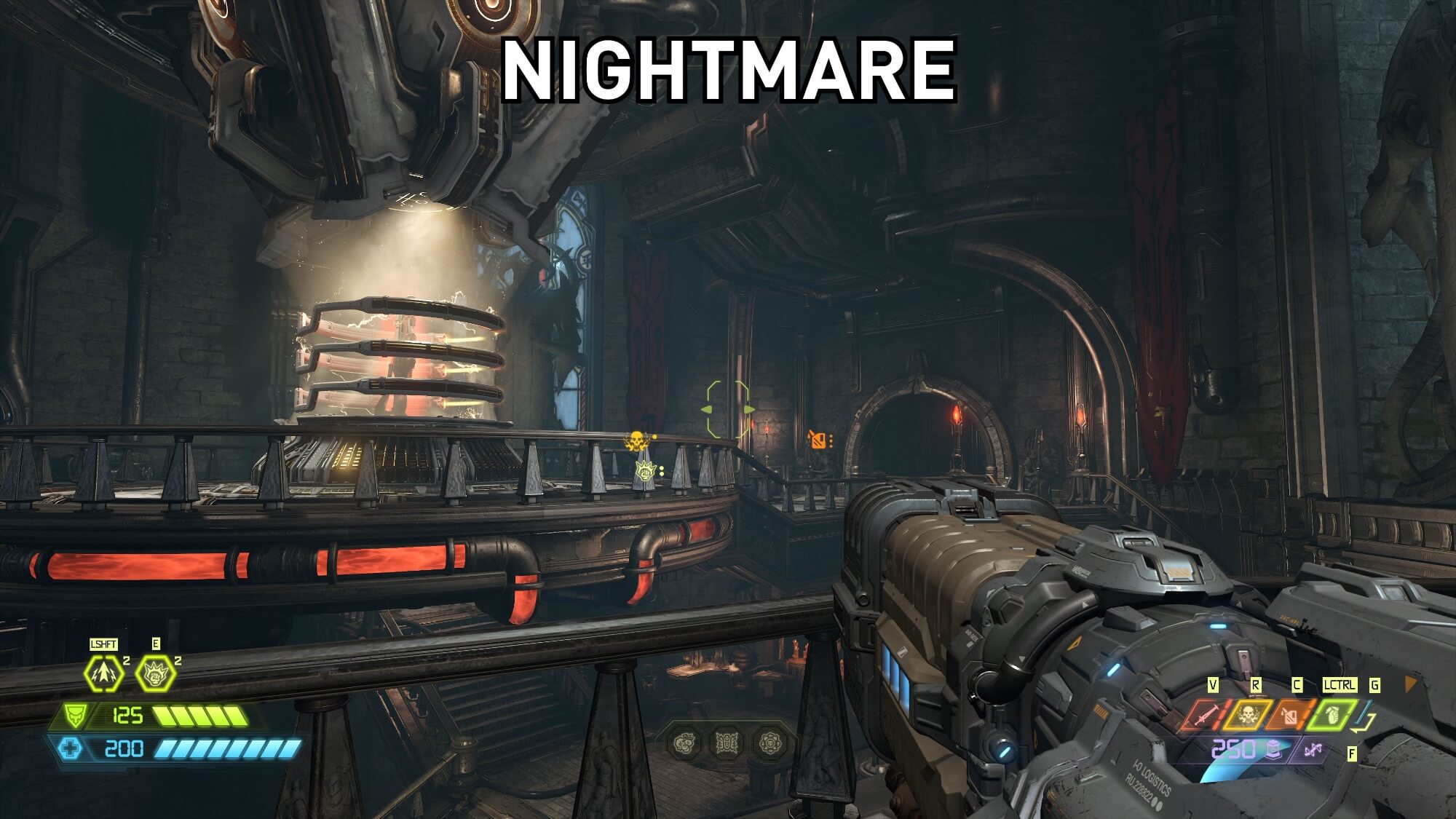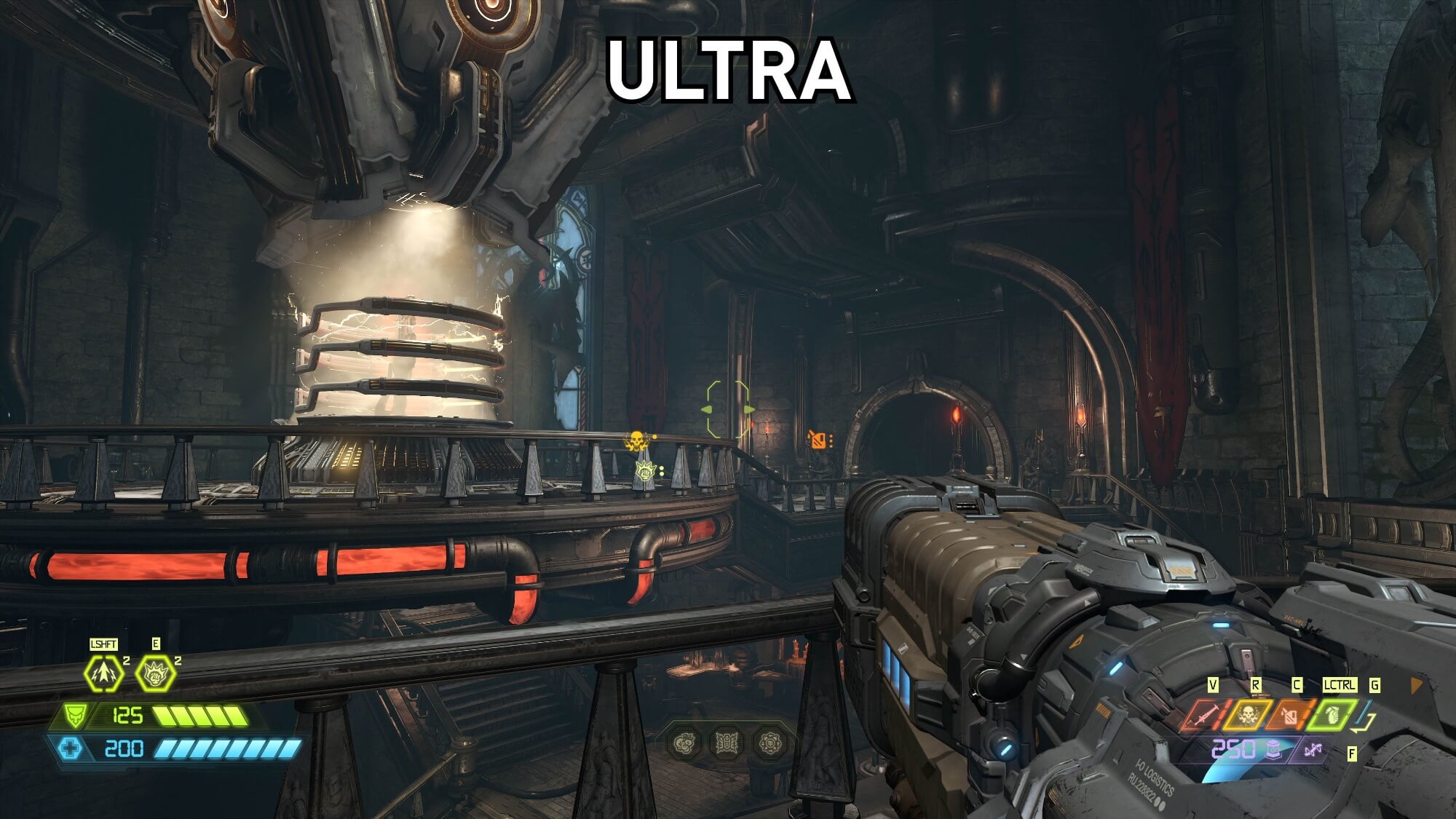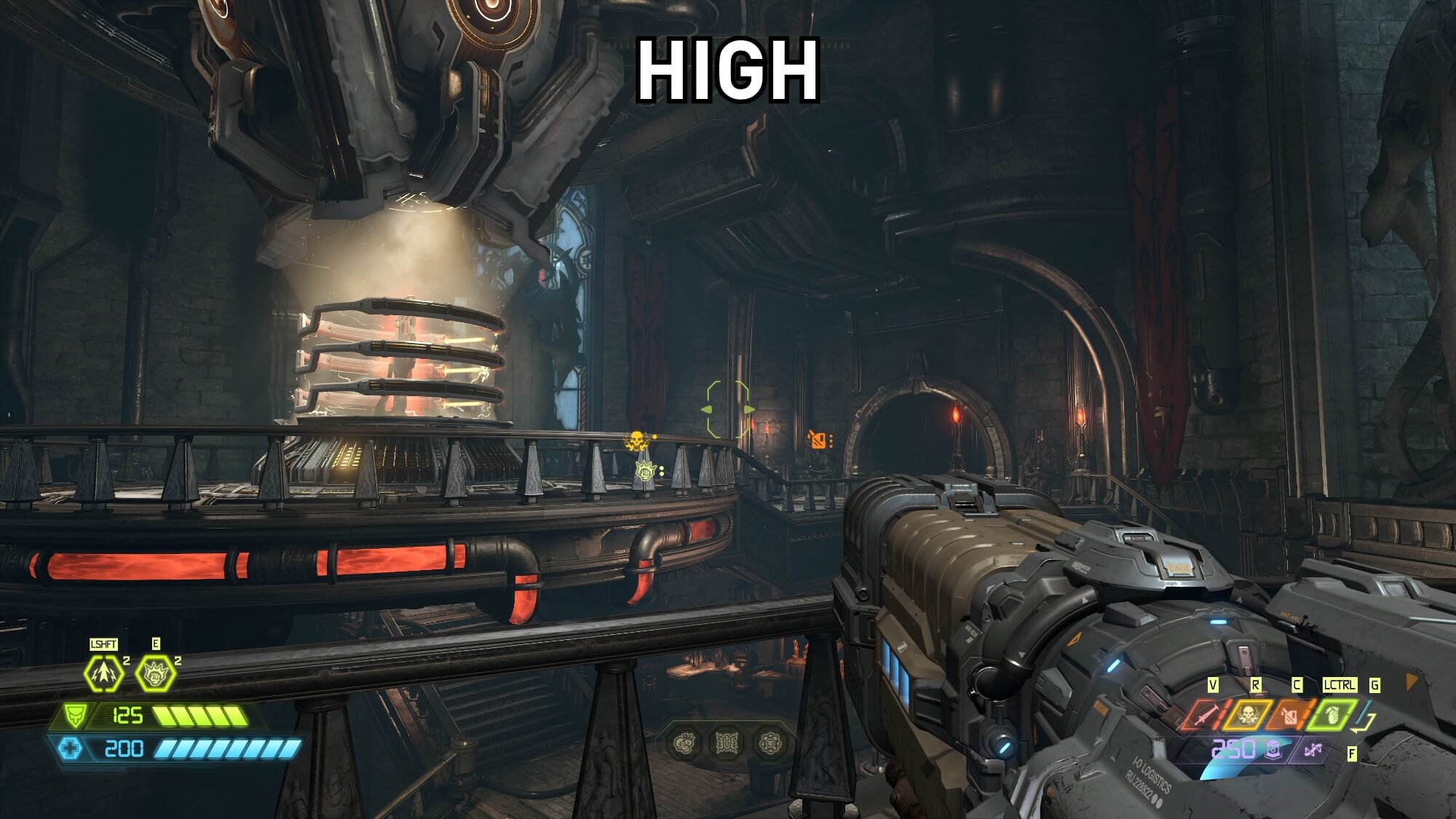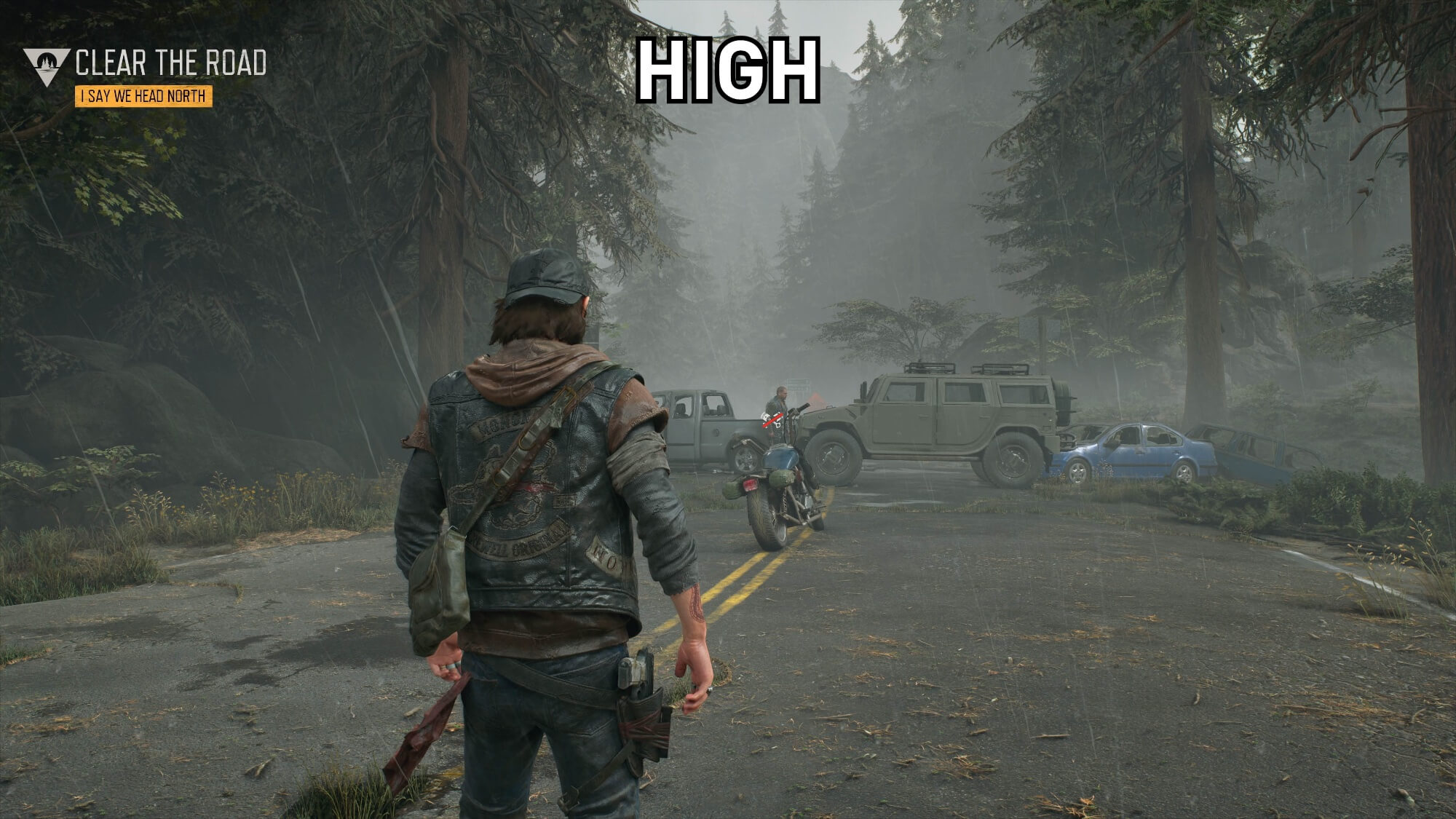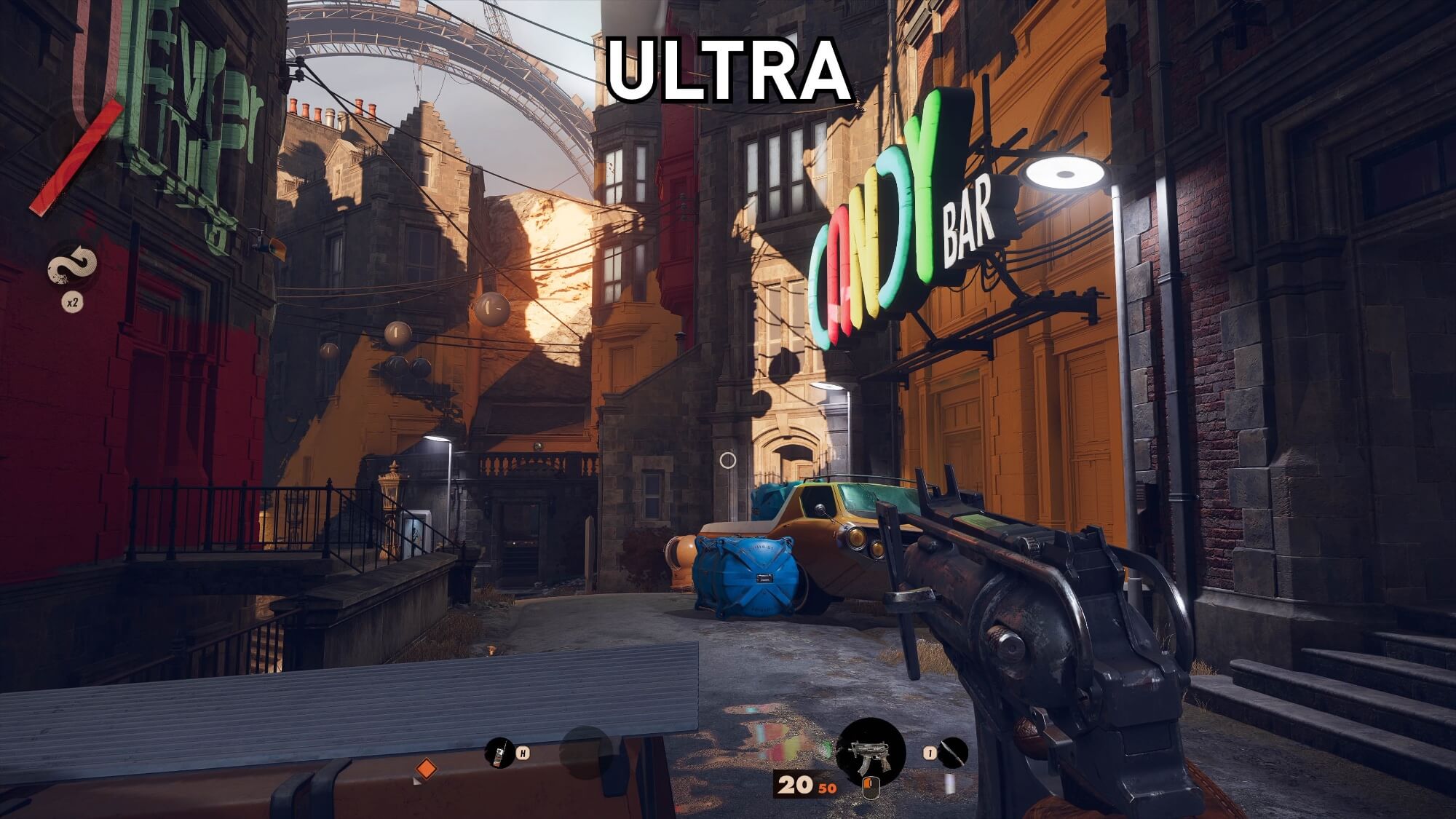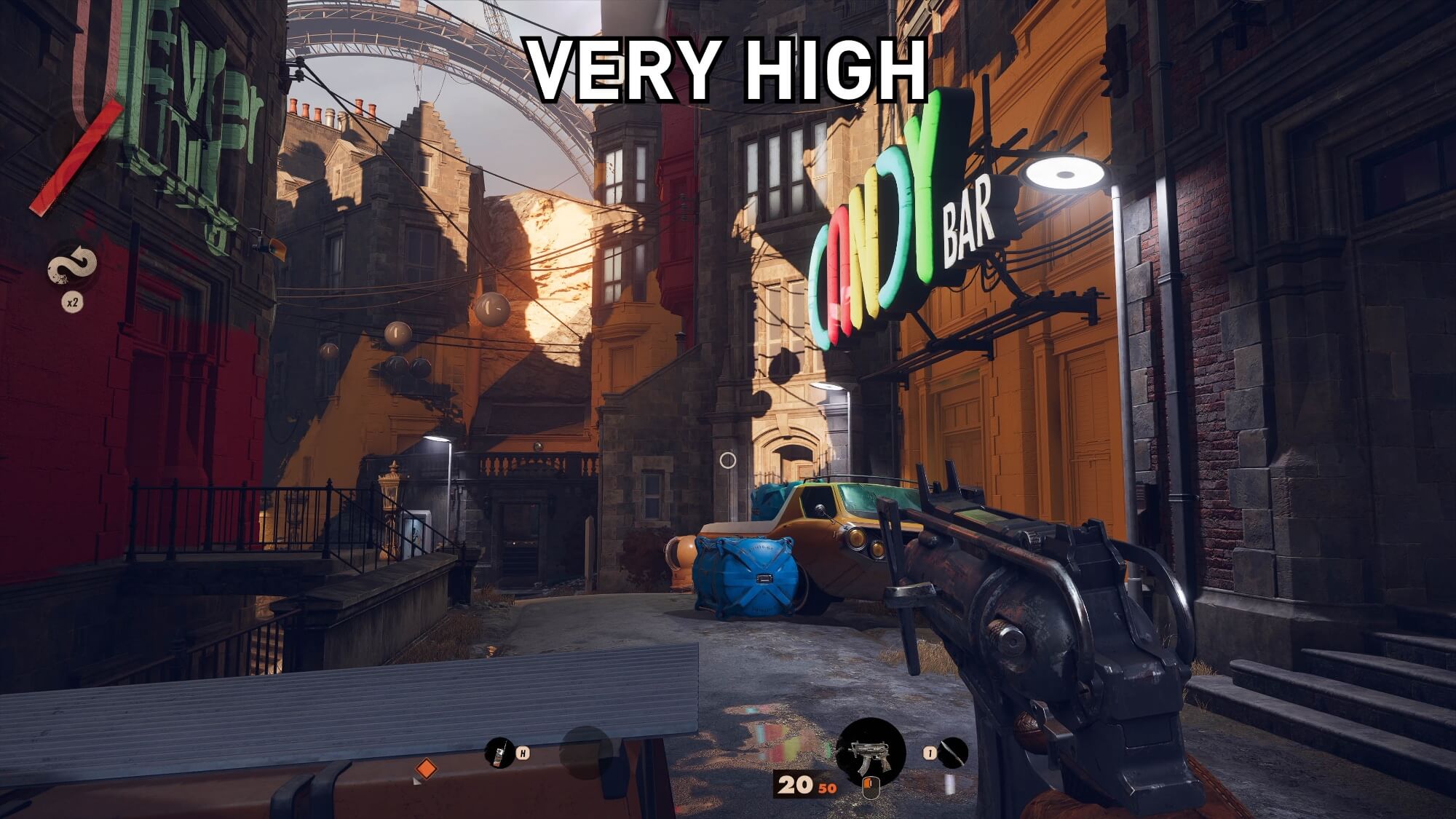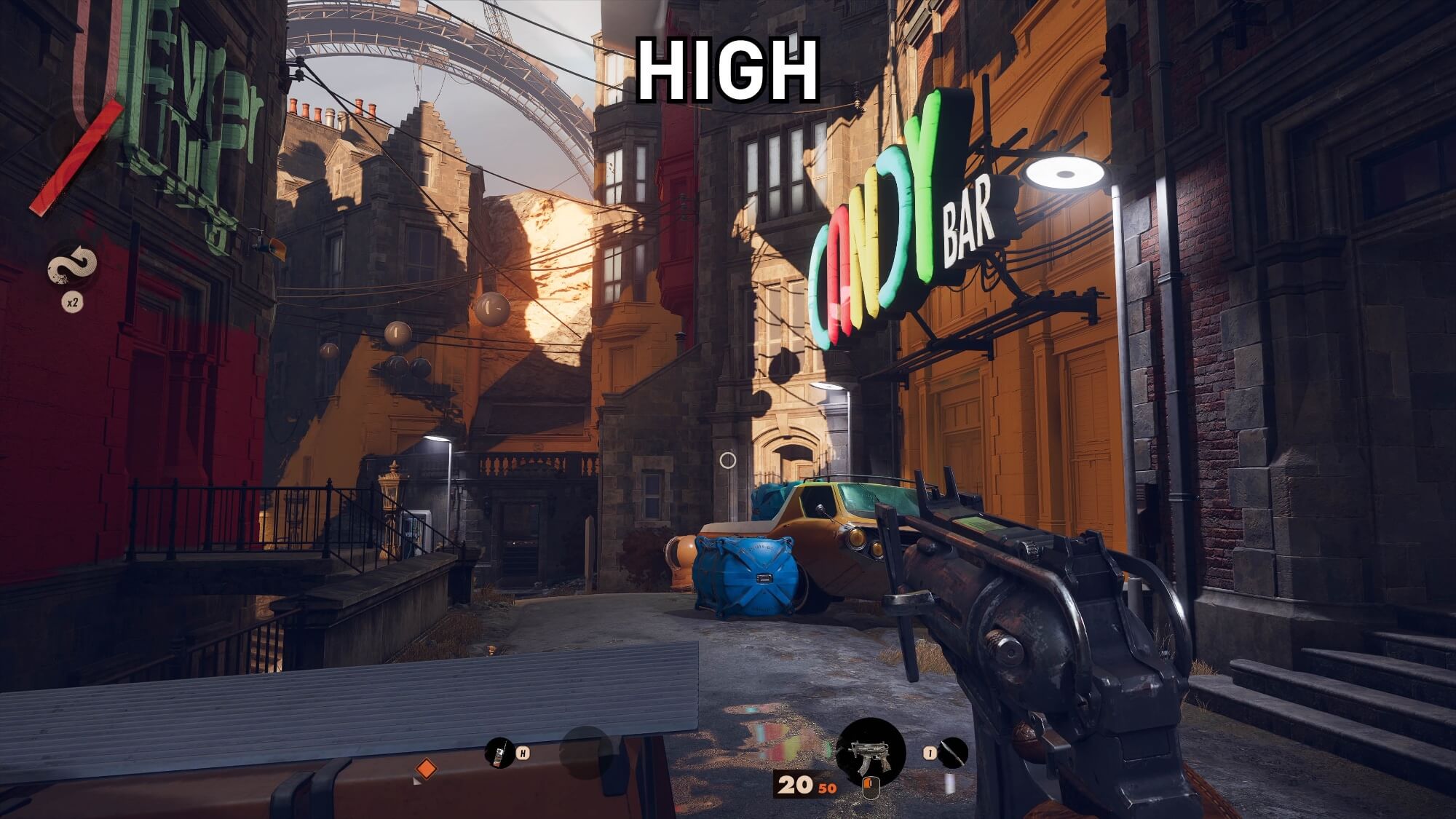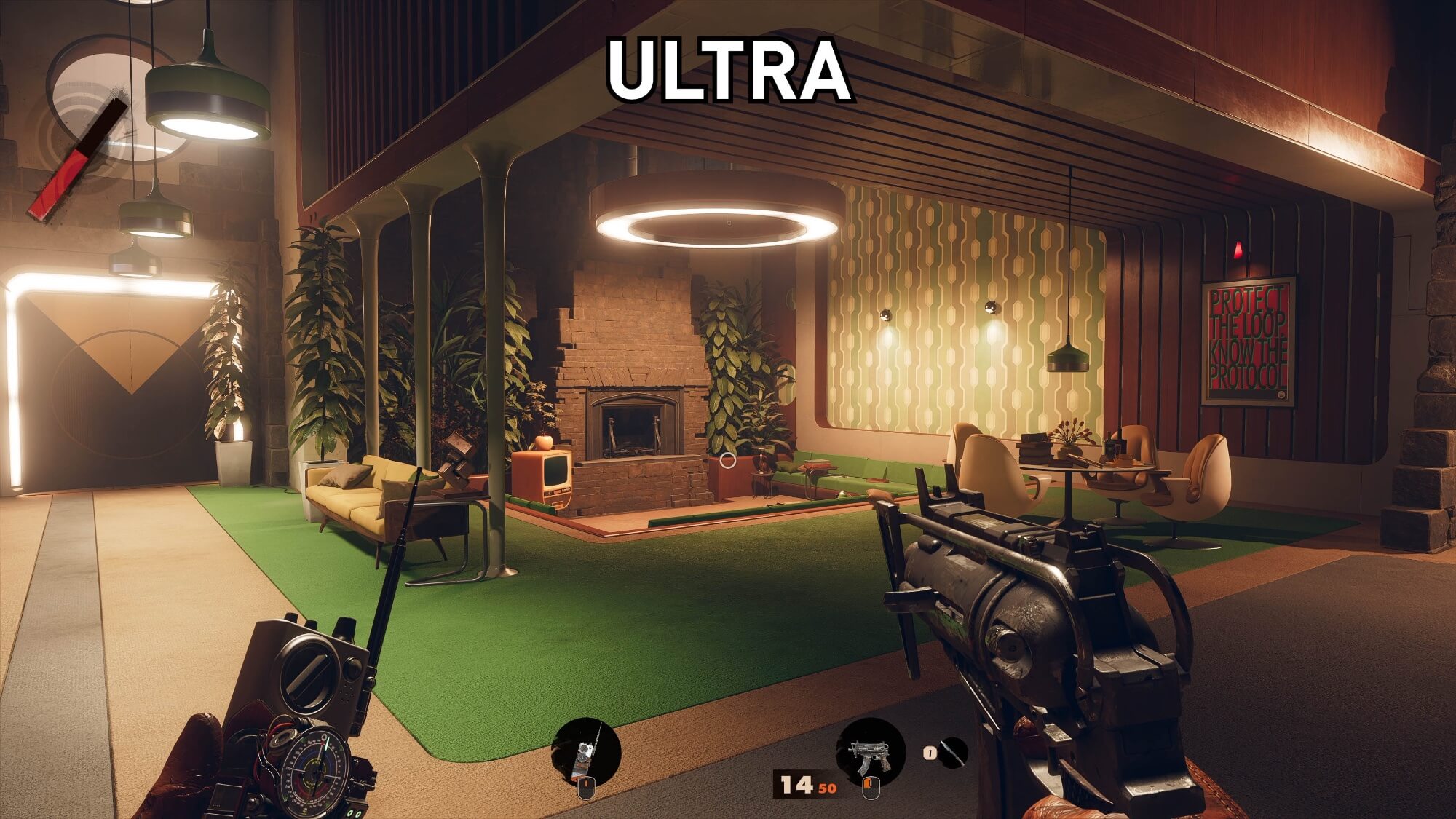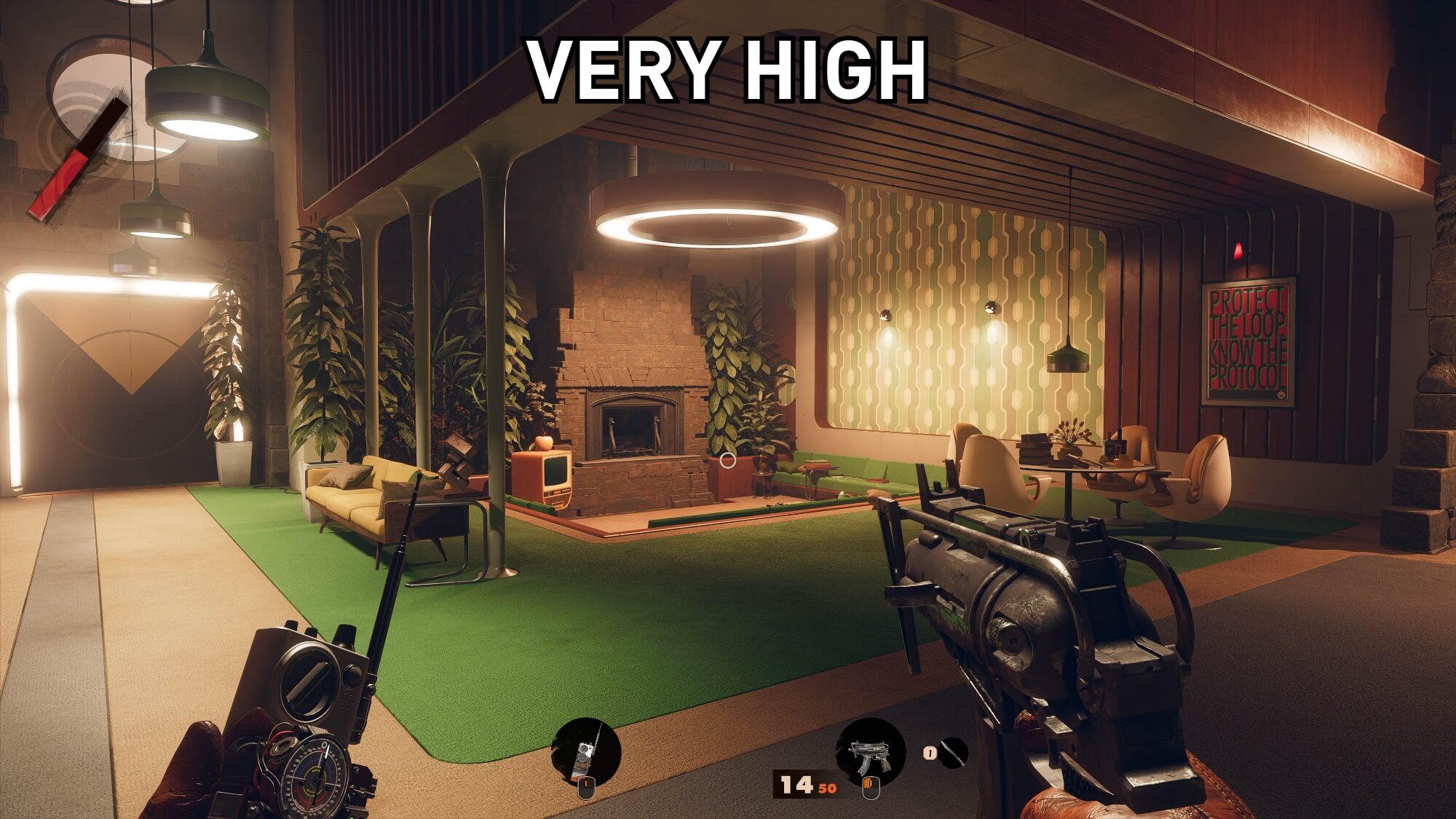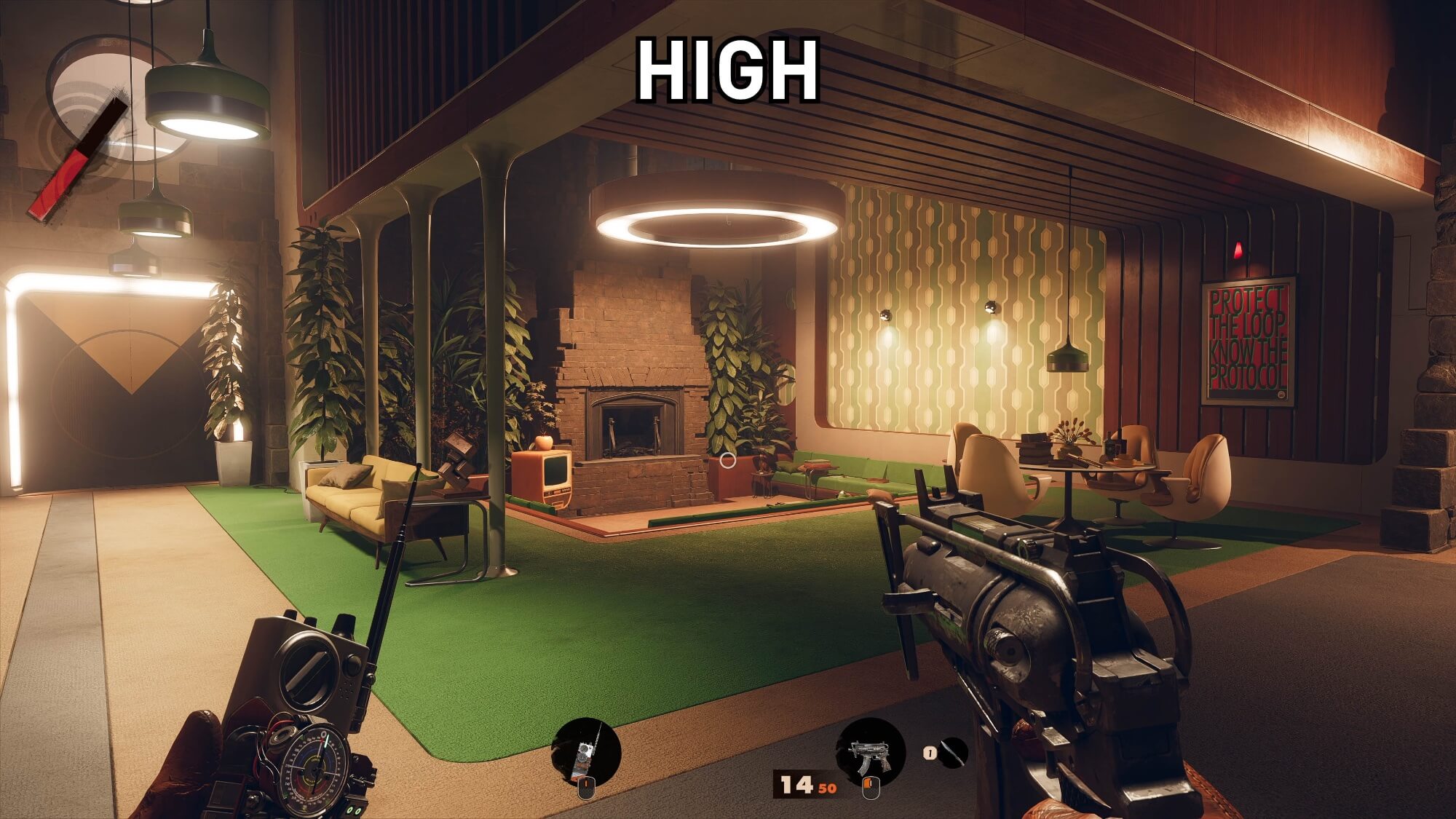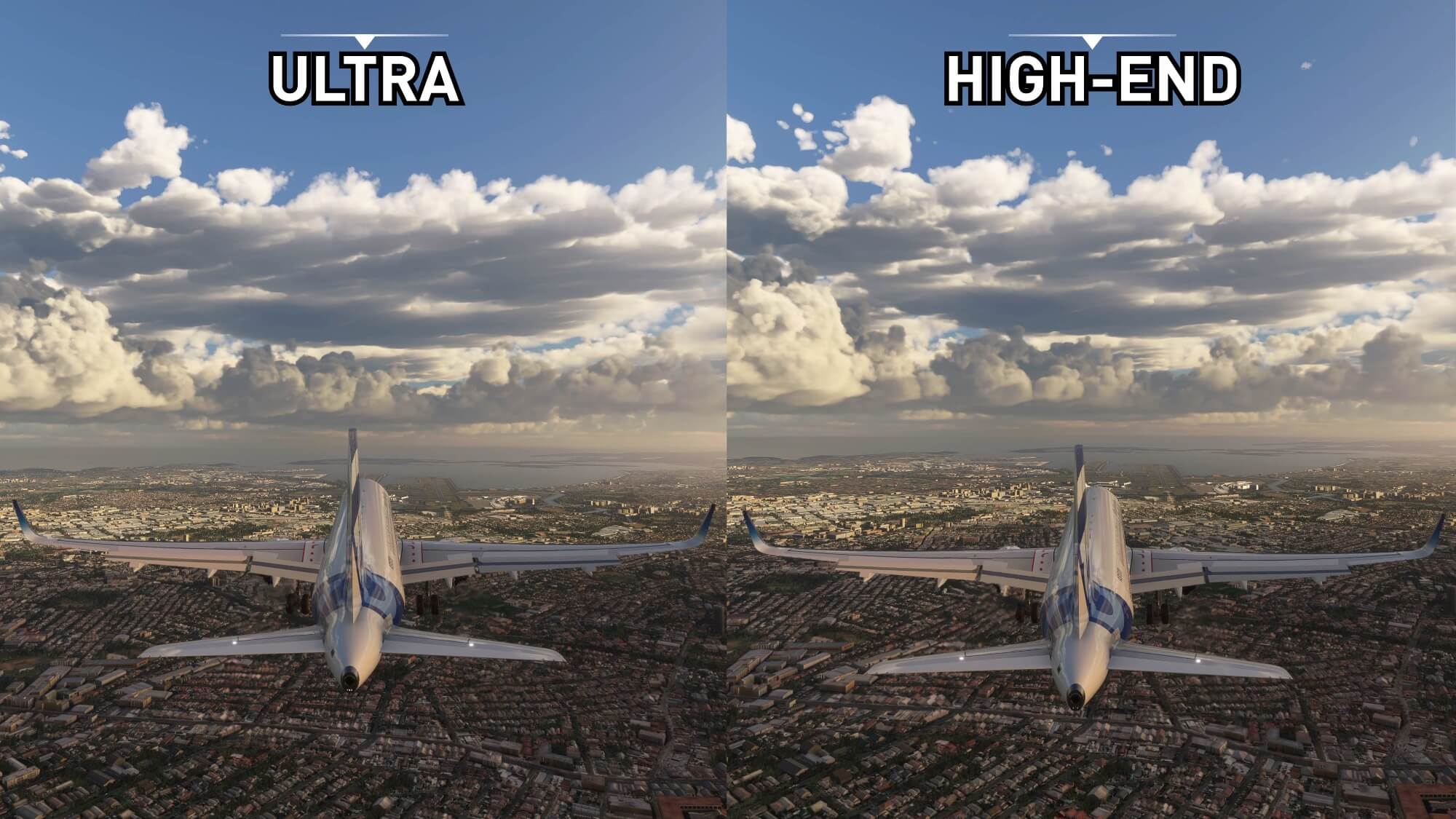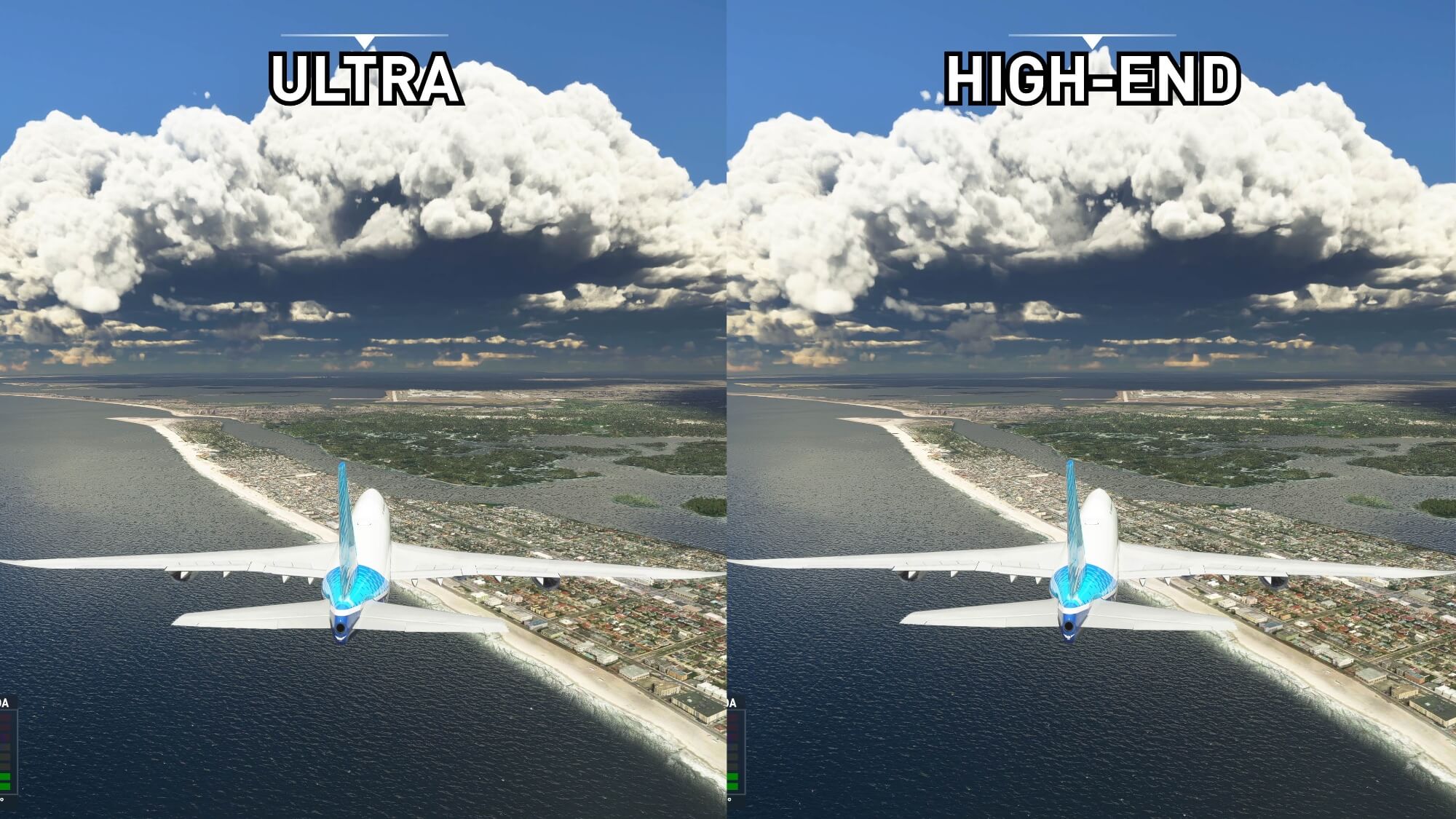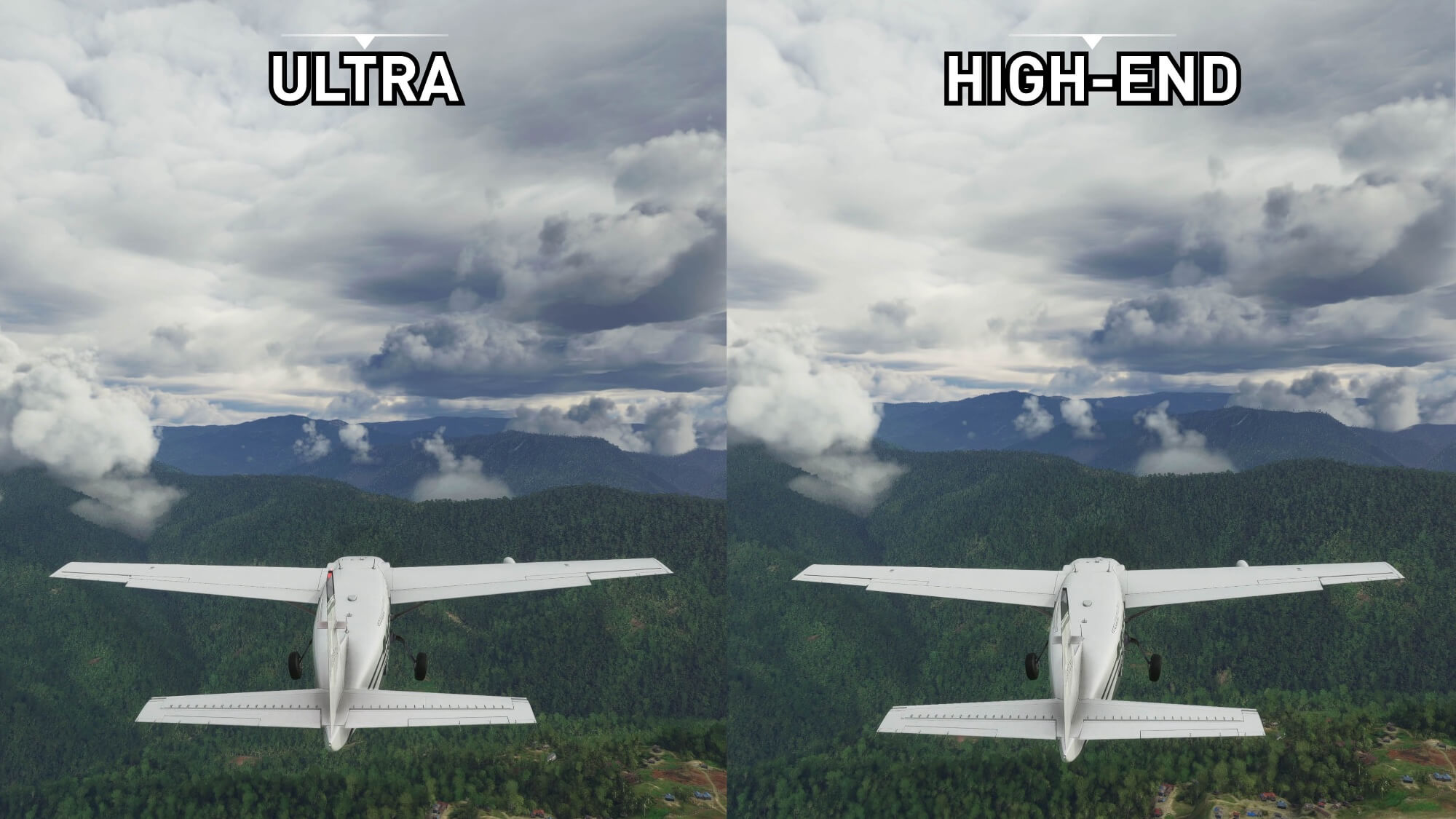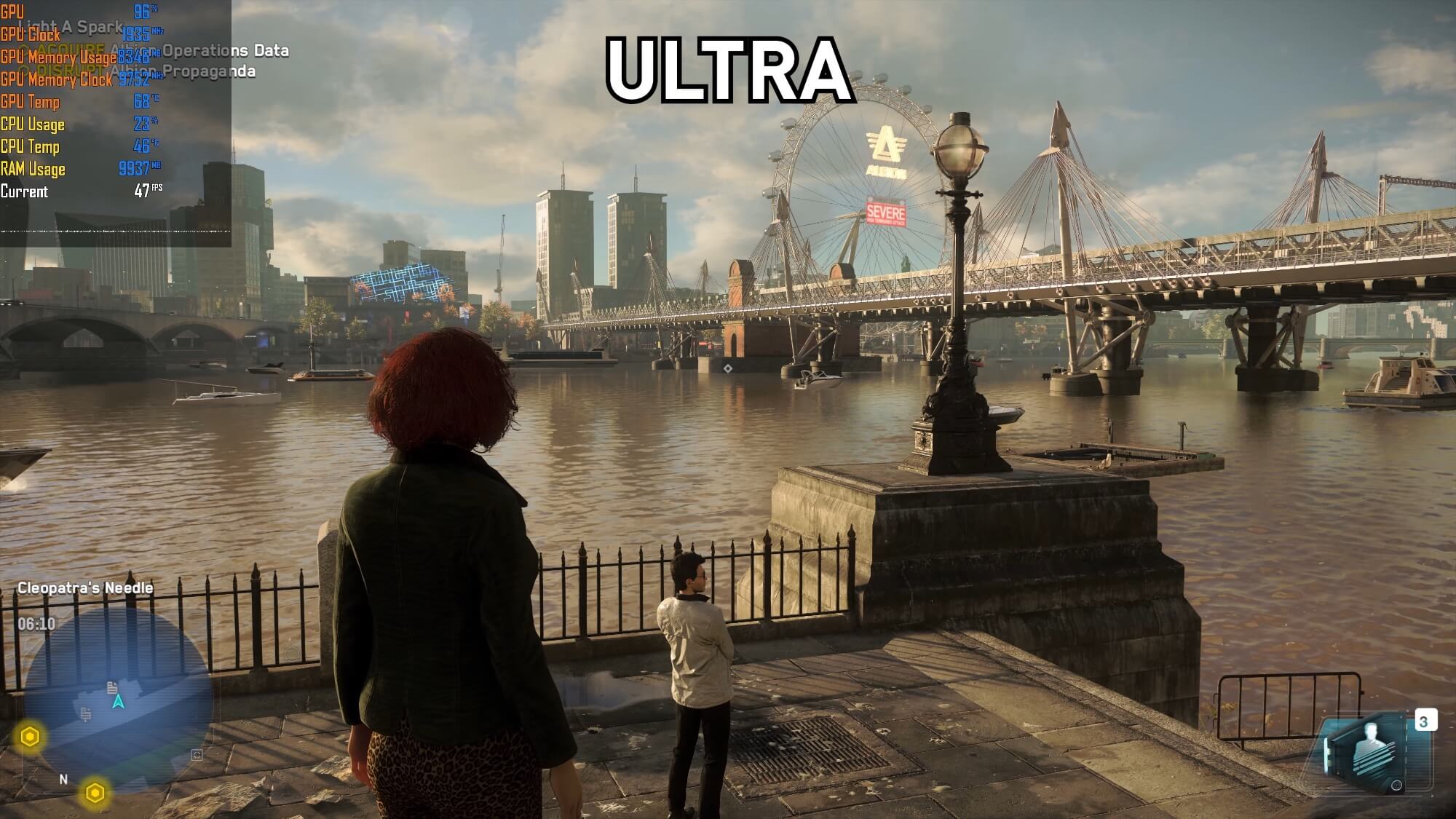It's time to talk about something that's been bugging me for some time: the Ultra quality settings offered in the majority of triple-A PC games. Everyone wants to play the latest titles using Ultra settings, everyone wants to crank stuff up to the max, and buy graphics cards that can do this – but what we've discovered after testing dozens of games over the past few years is that Ultra settings are actually pretty dumb.
By that I mean Ultra settings often only provide a very small visual upgrade over High settings at a large cost to performance, which makes them not worth using in a lot of cases. Don't get me wrong, I love a stunning visual experience, but the truth is that ultra settings tend to only make small changes over lower presets, and if you give High settings a chance you may actually find the experience preferable and a better balance in the visual quality-to-performance stakes.
Today we're going to look at the real world differences between Ultra and High settings in a range of games – both in terms of visuals and performance – to see why you perhaps shouldn't automatically choose Ultra settings in today's games, or in upcoming games. In a climate where GPU upgrades are ridiculously expensive and hard to come by, this info might also give some relief to gamers looking to optimize their setup; you might not need to buy that new GPU to still enjoy a great visual experience in these titles.
For today's testing we're using a fairly typical high-end test system equipped with a Core i9-10900K, 16GB of dual-channel DDR4-3600 memory, and a GeForce RTX 3080 graphics card. This allows us to run these games at 4K for the highest possible visual quality in today's video, while still being GPU bottlenecked in most of our configurations which is what we're after in this investigation. This sort of data has held up very well as a guide for other systems in the past, though of course, we'll point out situations where that may not be the case as we move through the results.
I should also note that we're sticking to the presets on offer in the games we've tested, so that means we're not factoring in ray tracing, DLSS, FSR or any other additional features because these are not part of the presets in every game. This isn't about turning off ray tracing to get big performance improvements, most people know that already, this is more about the regular presets on offer.
Image Quality and Performance Difference
Watch Dogs Legion
Watch Dogs Legion is the first game on the menu today and it has three upper quality presets: Ultra, Very High and High. The differences between Ultra and Very High mostly concern level of detail and draw distances. In the scene below you can spot the Underground sign and some of the surrounding windows dropping a bit in quality between the two presets. Stepping down to High further reduces level of detail, but the quality of lighting throughout the scene is honestly very similar.
In a second scene, I was able to spot a few small changes to shadow quality and texture quality between the three presets as well, though of course you can usually turn textures back up with next to no performance loss provided you have enough VRAM.
And in a night scene, I found it quite difficult to spot the differences aside from some minor adjustments to draw distance, as even the High settings are still preserving important visual quality offerings like reflections on the water and decent model quality.

The key thing here is that dropping from Ultra even just to Very High sees a 29 percent improvement to performance which I think is well worth it for a small hit to draw distance and shadows that isn't very noticeable while gaming. That can be further improved to a 47 percent increase when comparing High to Ultra, which really for most gamers is going to be the sweet spot considering the visual experience in Watch Dogs is still excellent in this mode, but performance is far higher.
Assassin's Creed Valhalla
The differences in Assassin's Creed Valhalla are even smaller between the top three presets: Ultra High, Very High and High. Switching down from Ultra to Very High produces in my opinion a rather negligible difference, mostly in far draw distance which is very hard to spot while actually gaming or even when making these comparisons.
The differences in shadow quality, reflections, lighting, textures and really most of the important stuff is virtually unchanged between the top two settings: in fact, in this benchmark pass, the most noticeable differences are slight changes to time of day and the position of clouds, rather than actual changes in visual settings.
Then when you throw High settings into the mix, it again presents only a small visual downgrade from either the Very High or Ultra High presets. Draw distances are further affected and shadows have become softer, and we're not getting as many small shrubs in the environment, but the overall visual presentation really is still quite similar. We're certainly not losing major effects like ambient occlusion or reflections when switching to High, which is responsible for a lot of the great visuals.

And the performance benefits here are decent though not as large as in Watch Dogs Legion. Moving from Ultra High to Very High saw a 9 percent performance increase, and that improved to 14% when moving to High instead. Given that the differences between Ultra and Very High are so small that's basically free performance being left on the table for most gamers and in Assassin's Creed Valhalla I certainly wouldn't recommend anyone simply enable the Ultra settings without first playing on Very High.
Cyberpunk 2077
Cyberpunk 2077 is a visually stunning game and one of the best looking titles this generation, but the Ultra settings are very punishing on today's hardware without using DLSS. In this game the differences between the Ultra and High presets are genuinely tiny, with Ultra enabling a lot of effects that only slightly improve the visual presentation at a big hit to performance.
For example, you'll be pretty hard pressed to spot any differences between Ultra and High in the scene below, maybe a few very small changes to shadowing, but actually the biggest change appears to be in the sharpness of content around the edges. Ultra enables chromatic aberration while High leaves this setting disabled, and therefore it's actually the High mode that has greater clarity around the edge of the screen. Some people may actually prefer how High looks, despite Ultra being the "higher" and supposedly more visually intensive mode.
I was also able to spot some tiny differences in reflection quality. We're just using regular screen space reflections here, and the Ultra preset has a very slightly higher reflection resolution and quality, but again most of the differences are negligible. In another scene, we see small changes to shadow quality and ambient occlusion, but I'm not sure if you'd actually be able to spot these differences straight away if I wasn't pointing them out to you.
Texture filtering is another area that has received a minor visual downgrade moving from Ultra to High but even at 4K the High mode still looks great for texture clarity.

And the big kicker is the performance uplift. In our benchmark pass, using the High preset instead of Ultra delivered a 24% increase to performance, which is basically for free given the incredibly small visual differences. In Cyberpunk, the Ultra preset really is dumb and most gamers should not be using it instead of High given that sort of performance delta.
Hitman 3
Hitman 3 has no presets, so in this game I'm comparing the settings labeled "Ultra" to the settings labelled "High." This is another title where I found it difficult to spot the differences between the two. The game is telling me that High is reducing level of detail, shadows and ambient occlusion, but in practice the differences are negligible with only a tiny change to shadow detail or draw distance seen in practice. It's certainly not the sort of difference you'll notice while playing the game most of the time, as Hitman 3's stunning reflections and other visuals are preserved regardless of what options you choose.
As only a few settings are changed between Ultra and High, the performance difference is also small: just a 5 percent improvement in this case. I still think this is worth it given the virtually unnoticeable visual downgrade, but it's not the earth shattering improvement that will take an unplayable experience and make it playable. Not every game chooses to go all out with Ultra settings.

Dirt 5
For Dirt 5, it may be worth looking at some side-by-side footage in video, running using the Ultra High preset, and the High preset. I really tried to find the differences between these two passes but found it incredibly hard watching the races in motion. I think there are some slight improvements to reflections, shadows and terrain quality in the Ultra High image, but for the most part the images are virtually identical - and are especially identical in the motion of a race. There may be some things I'm missing, but I checked a few other scenarios and cannot identify much of a difference.
Unlike in Hitman though, there's quite a substantial performance advantage when going with the High preset, which is a bit baffling and indicates that Codemasters must be going really over the top with minor upgrades when you enable Ultra High.

It's a straightforward 17 percent performance improvement using High over the maximum preset for virtually no change to visuals so this is a total no-brainer: gamers should be using the High preset and forgetting about Ultra.
Doom Eternal
Doom Eternal has four presets in the higher range: Ultra Nightmare, Nightmare, Ultra and High. The differences between Ultra Nightmare and Ultra, a two spot reduction in the graphics preset, are tiny. I noticed very small changes to ambient occlusion quality for distant objects and that's about it. Almost everything else in the scenes I checked was unchanged including the quality of reflections, models, volumetrics, and so on. Ultra Nightmare in Doom Eternal is like an "extreme" preset in other games that doesn't do much to the visual experience.
There is a more noticeable change between Ultra and High though. There's a more pronounced change to lighting and the way lights interact with some surface materials. Ultra has a more natural look, while High is a bit reduced in that regard. With that said, High still looks good and nothing much is sacrificed in terms of environment quality or level of detail.

Doom Eternal is an interesting case on the performance side from the perspective that generally the game runs really well on a variety of hardware, so I'm not sure there is much of an incentive to reduce visuals. With that said, Ultra Nightmare isn't worth using, as switching to Nightmare saw a 7 percent performance improvement in the area we tested.
However the difference between High and Ultra Nightmare is only a 10 percent improvement to frame rate, so with more noticeable differences in visuals I think the balance with this game lies with either the Nightmare or Ultra modes - though once again the highest available preset isn't worth using.
Days Gone
The big outlier in our testing today. There is a substantial difference in Days Gone between the highest preset on offer, Very High, and the High preset. Turning down to High has a significant impact on the way the environment is shadowed and lit, affecting both ambient occlusion and shadow quality. A lot of shadows simply disappear when using High, and that causes the game world to look flatter and less natural.
There isn't much of an impact to draw distance or texture quality, which is good to see as it often makes sense to keep these settings on higher quality levels if you have enough VRAM and a good enough CPU.

With a moderately large visual difference between the Very High and High presets, it's no surprise to see one of the largest performance differences we've encountered yet. A 33% performance improvement is significant, but while that's nice for more mid-range GPU owners, I don't think those with powerful GPUs will want to sacrifice visual quality in this way. Tweaking of the individual graphics options is the way to go in Days Gone.
Deathloop
Another example of a game where there isn't much of a visual difference between the three highest presets in Deathloop: Ultra, Very High and High. In the first scene shown below, there are small differences to draw distance for far objects and reflections quality between Ultra and Very High, but you'll be hard pressed to notice this difference unless you're specifically looking for it.
Another scene where outside of a few small areas, nothing much changes and again it's great to see the high texture detail preserved regardless of your choice.
Even using High settings doesn't degrade the visual quality that much compared to Ultra, there is a small change to how shadows work, particularly contact shadows - but the game still looks great using High settings. The most obvious difference was more in terrain quality in some scenes, I did spot an adjustment to how tessellation works but it doesn't necessarily make the game world look all that much worse, and most of the key features such as shadows and reflections remain at great quality levels.

In Deathloop we recorded a minor performance improvement moving from Ultra to Very High so these two modes are nearly equivalent. However dropping from Ultra to High saw an 18 percent performance improvement, so that's a pretty easy uplift to achieve at a relatively minor cost to visuals. This might let you achieve a more consistent frame cap, which appears to be the way most people are playing Deathloop at the moment.
Microsoft Flight Simulator
The final game I'm looking at today is Microsoft Flight Simulator. This remains one of the most visually stunning games today, and it looks spectacular whether you choose to run it at the Ultra preset, or the step lower High-End preset. The major differences between these are in draw distance, and I say major but it's mostly a minor change depending on the environment.
Ultra has longer draw distances with more objects loaded further into the distance, as well as a few minor improvements to cloud quality.
However, I still think that High has generally very good draw distances with very similar detail on closer objects compared to Ultra. In fact, lots of areas are similar between these modes, such as the quality of the plane model, reflections, shadows and water quality. Ultra does provide that slight bump in visuals and is great for extremely powerful rigs, but you shouldn't feel bad at all for running on High-End instead.

And the performance upgrade on offer is rather significant. A 25% uplift in frame rate on the landing challenge at Sydney Airport with a high object load. Now, Flight Simulator can be quite CPU intensive depending on your hardware and the conditions, but when testing for GPU limited testing at 4K like we are today, being able to go from 45 FPS to 57 FPS on average is pretty substantial to providing a smoother experience with a variable refresh display.
What We Learned
That's our look at nine different PC games and how they look and perform when comparing Ultra and High presets. Most of these games are quite impressive visually and in the majority of them, the visual impact when going from Ultra to High is small, with lots of key visual features still used in the High mode, such as reflections, ambient occlusion or high quality shadows.
For the most part, the jump from High to Ultra covers only minor improvements, like slightly sharper shadows, more accurate ambient occlusion, or commonly longer draw distances. This can often lead to High being very hard to distinguish from Ultra.
In games like Cyberpunk 2077, Hitman 3, and Dirt 5, choosing Ultra over High offers basically nothing other than a reduction to frame rate. Then in several other titles such as Flight Simulator, Assassin's Creed Valhalla and Deathloop, the differences are only noticeable if you really look for them. But, that's not the case 100% of the time, as shown in Days Gone which had the largest difference between the presets.
The performance improvement you get from simply flipping the switch from Ultra to High is typically in the range of 15 to 25 percent, which is nothing to scoff at.
The performance improvement you get from simply flipping the switch from Ultra to High is typically in the range of 15 to 25 percent, which is nothing to scoff at. With very limited improvements to visuals, that does make the Ultra presets in many of these games kind of dumb – choosing Ultra is punishing your hardware for not a great deal in return. Case in point, in only one of these games I'd say the highest preset offers the best "optimized" experience: if the balance of visuals and performance matters to you at all, High is the place to be.
PC gamers should shift away from thinking Ultra settings are the obvious go-to choice for gaming.
The point of this article was to cover a few things beyond simple assumptions and the first takeaway is clear: PC gamers should shift away from thinking Ultra settings are the obvious go-to choice for gaming. All the talk is about playing on "Ultra" and needing hardware to play on "Ultra," when really, High settings are just fine or rather almost the same. Ultra is often a waste of time and can lead to complaints of a game being "poorly optimized." I don't think a game that is punishing on Ultra but looks virtually the same on High and performs much better should be classed as "poorly optimized," that's more an issue of perceiving Ultra as the only way to play a game on PC when that's not at all the case.
Of course, there are games that are poorly optimized, and there are plenty others that don't offer the best presets and will unnecessarily drop texture quality even when using the "High" mode. But for the most part, I think we should be more willing to try out the presets below the highest when gaming on PC as the experience is often better.
The second important takeaway is that if you shift away from Ultra as the only setting worth using – or that you need to play on Ultra or you're missing out – then upgrading your PC becomes a less daunting task. High settings are more playable on a wider range of hardware, and if High is your target, then maybe you don't need that RTX 3080 or RX 6800 XT. This sort of thinking will actually save you money, which is crucial in today's climate where an RTX 3080 costs a zillion. Optimizing for what you have and what actually gives the best cost-to-experience ratio is always a good approach to take.
"High" settings are more playable on a wider range of hardware, and if High is your target, then maybe you don't need that RTX 3080 or RX 6800 XT...
While we strongly recommend gamers use High settings instead of Ultra in most games, there are still reasons to use Ultra settings. Benchmarking GPUs is one of them, using Ultra places the most stress on the GPU, it will lead to fewer CPU or other system bottlenecks, and that's the best practice for reviewing hardware. We'll still be using Ultra settings in a lot of our benchmarks for this reason.
It also can make sense to use higher quality presets when you face other limitations. If you're CPU limited for example, raising quality settings can often come at no hit to performance, which is always nice. Similarly, if a game is hitting the refresh rate ceiling of your monitor and you're playing with Vsync or frame rate limits enabled to prevent tearing, that's another opportunity to raise visual quality at no loss to performance.
And finally, there are games where frame rate maybe isn't that important, you have powerful enough hardware and just want to experience the best visuals the game has to offer. Slow paced single-player games are a perfect example of this, where maybe you don't need an extra 20 FPS if you're already playing at 120 FPS. But it's important to be aware that in these cases, the actual benefit from using Ultra may not be as high as you thought.
